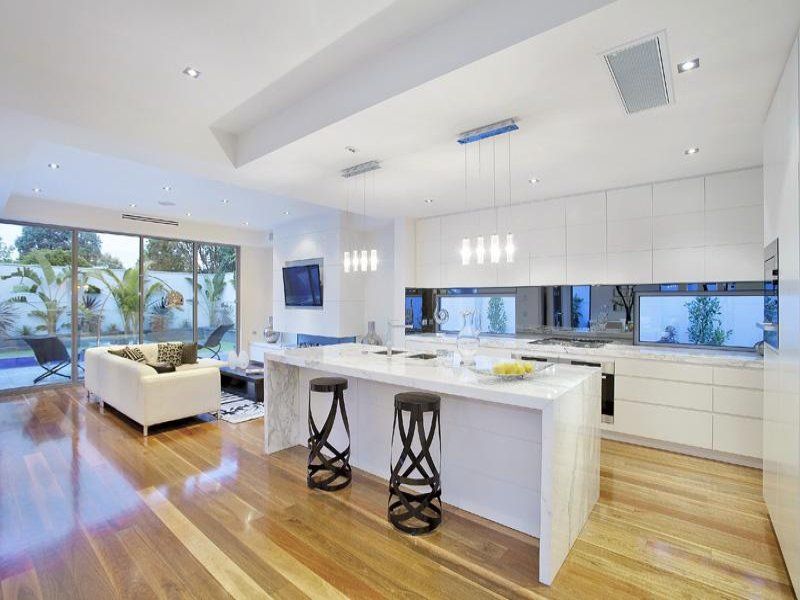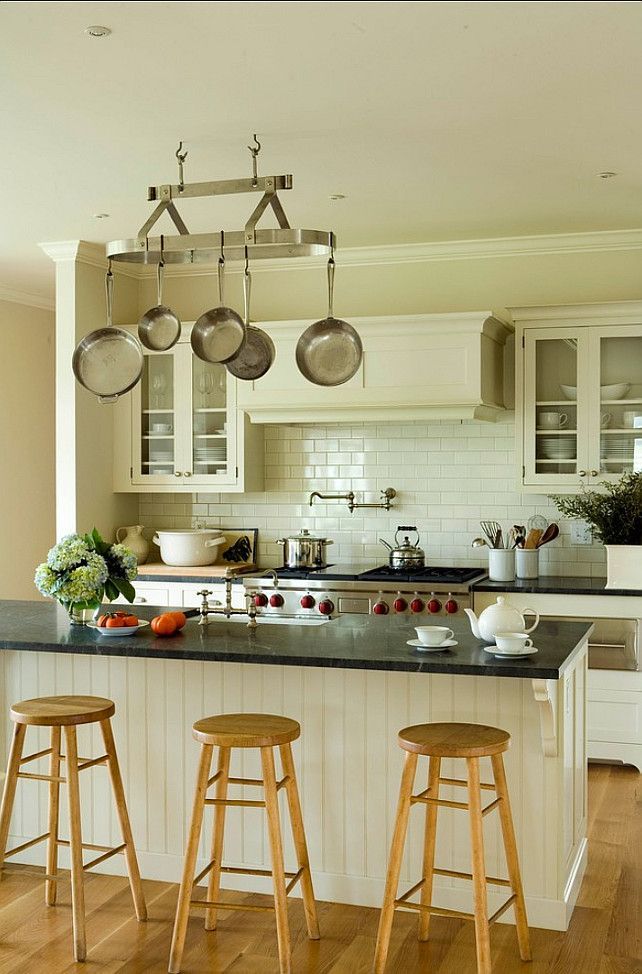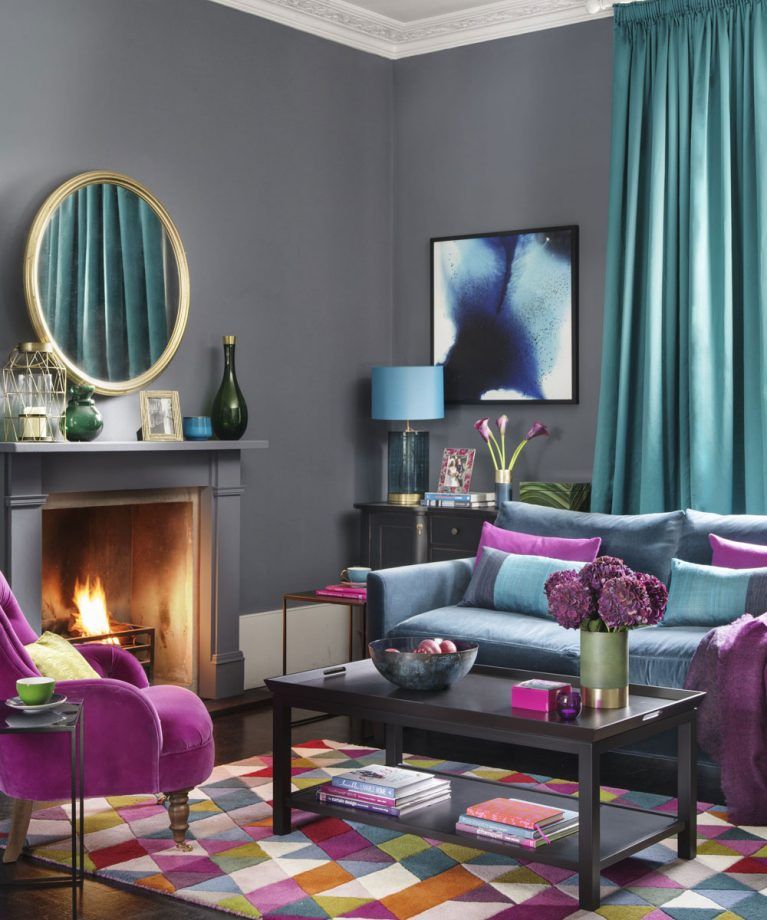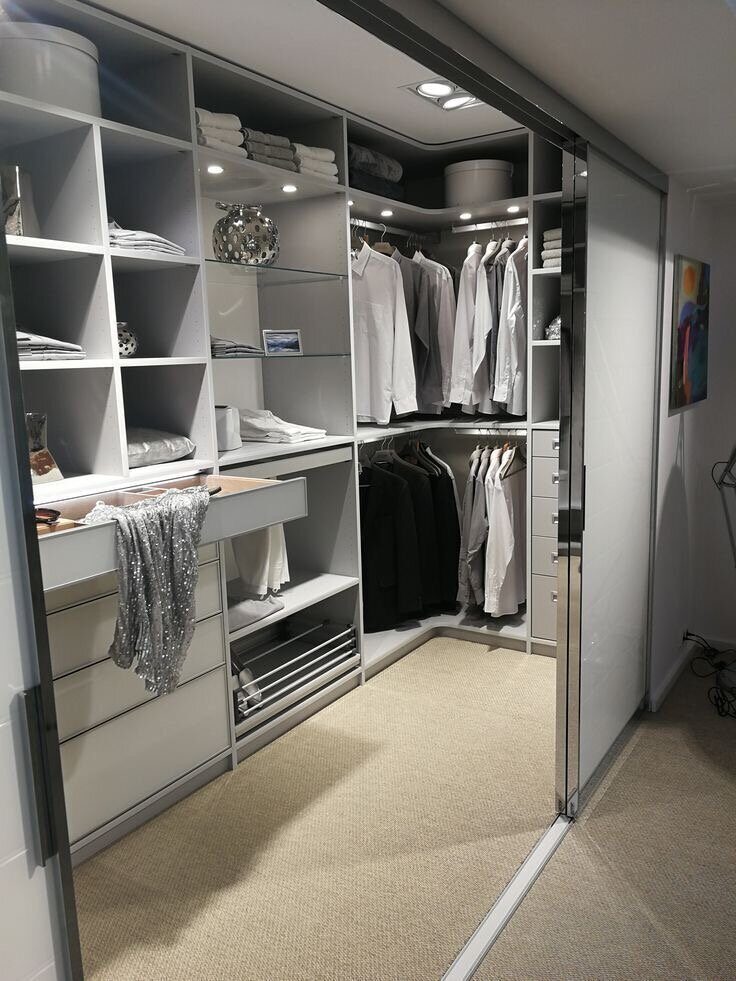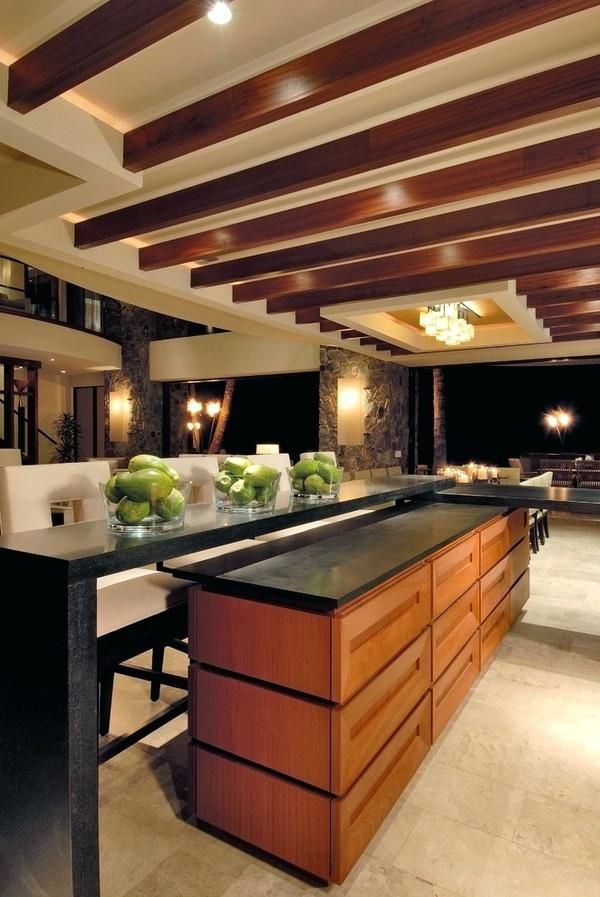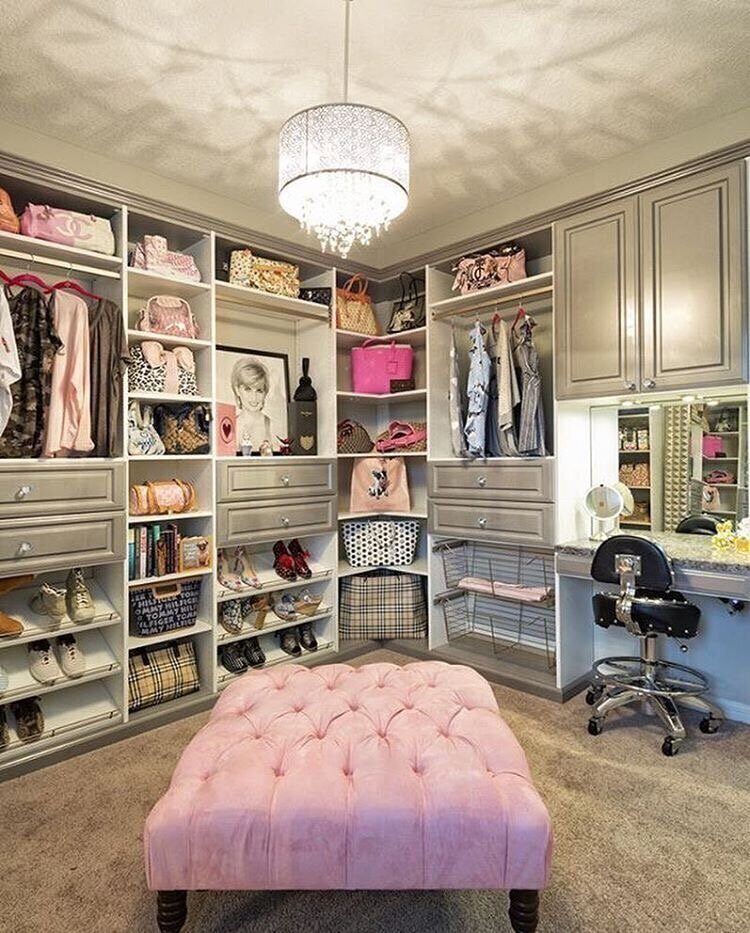Open plan ideas
71 really clever ideas to make open-plan work for everyone
71 really clever ideas to make open-plan work for everyone | loveproperty.com71 really clever ideas to make open-plan work for everyone
Gallery View|
Expand View
How to master open-plan design
Darlings of Chelsea
An open-plan scheme is a natural choice for sociable, modern living, but a free-flowing floor plan requires careful planning and execution to make sure the space really works. From a large, broken-plan hub fit for the whole family to a multitasking studio apartment setup, here's how to master the secret to open-plan living design, no matter the size or style of your home. Click or scroll on for more...
Use coordinated colour throughout
Dunelm
In a smaller open-plan space such as an apartment use the same colours throughout to keep the room organised and unified. Here, green modern forest green kitchen cabinetry is linked to the living space by green soft furnishings. A striking blue sofa blends with matching blue curtains on both the living room and kitchen windows.
Zone areas with rugs
Johnlewis.com
Ground areas of your open-plan living space with tactile rugs. Pop an area rug under and in front of the sofa to increase the sense of living space. Choose a complementary style to pop under the dining table; this creates an island scene. Or, a runner will guide traffic flow into other spaces and rooms.
Decorate the back of the sofa
Dunelm
It's common in open-plan spaces to have seating set out strategically creating a living zone. But this often means the back of the sofa is exposed. The solution? Bring in a sideboard. Cleverly placed it will not only cover up the bare sofa behind but will divide the areas more sufficiently.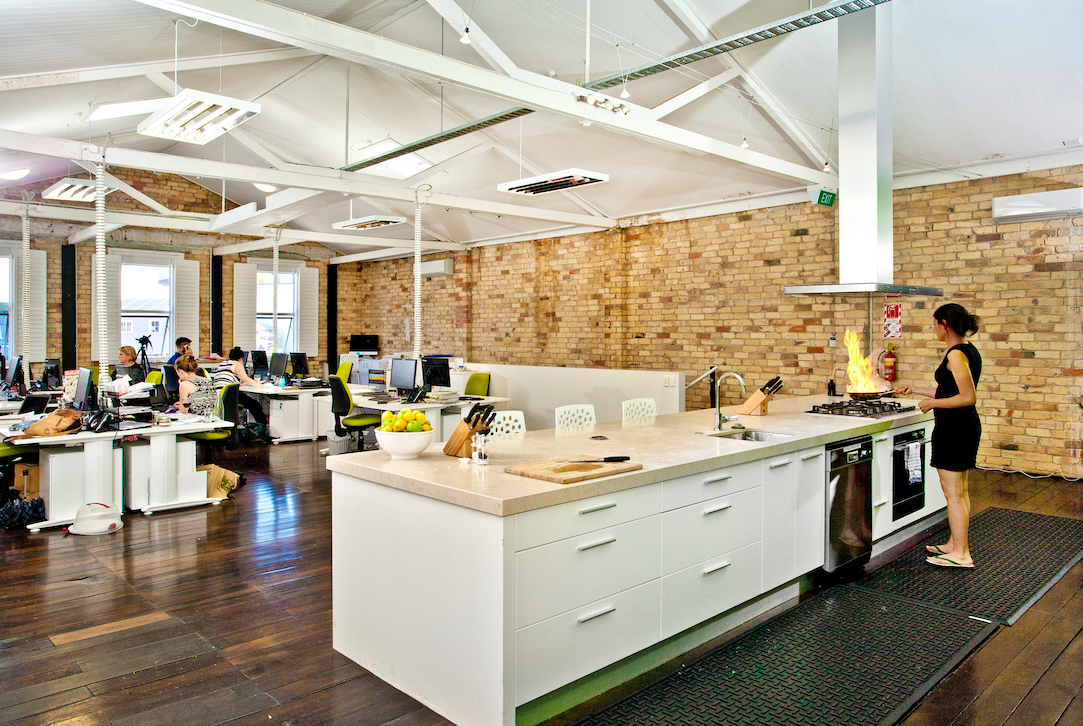 The extra surface can be used to add a table lamp and decorative accessories.
The extra surface can be used to add a table lamp and decorative accessories.
Call in the experts
Furniture Choice
If you’re planning to knock down walls and create an open-plan scheme in your current home, then you’ll definitely need help making the job a success. Experts will not only be able to complete the work to a high standard, but ensure that load-bearing walls are retained, or reinforced steel joists are installed to support the upper floors of the home. Consider hiring an architect, a builder and a structural engineer, to ensure your open-plan space is not only beautiful, but safe too.
Corner the kitchen
Porcelain Superstore
An open-plan living and kitchen area has many benefits but sometimes shutting off the kitchen whilst cooking is more practical. Glass walls create the best of both worlds; noise steam and cooking smells can be closed off without compromising on light or sense of space.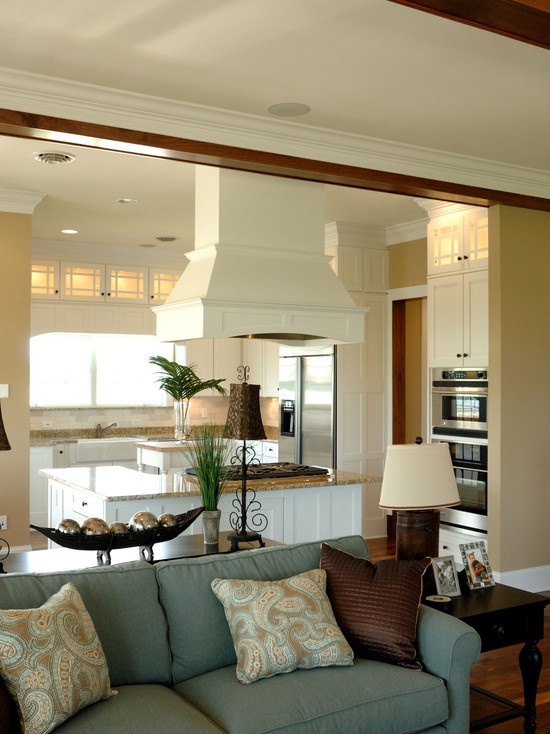
Unify alcoves
Sharps
Make use of older property alcoves by building matching bespoke storage that knits newly knocked-through rooms together. Painted dramatic navy blue, these built-in bookcases blend seamlessly with a workstation behind the living area to keep the whole space coherent.
Open up with arches
Johnlewis.com
If you are at the planning stage of making your home open-plan, why not give the design a touch of architectural structure arched through ways? Curves are currently a huge trend and the contours will soften a space adding charming character.
Mix old with new
Porcelain Superstore
Give a large space character by contrasting zones with old and new décor. This spacious kitchen has been given farmhouse charm with heritage-style floor tiles and rustic cabinets.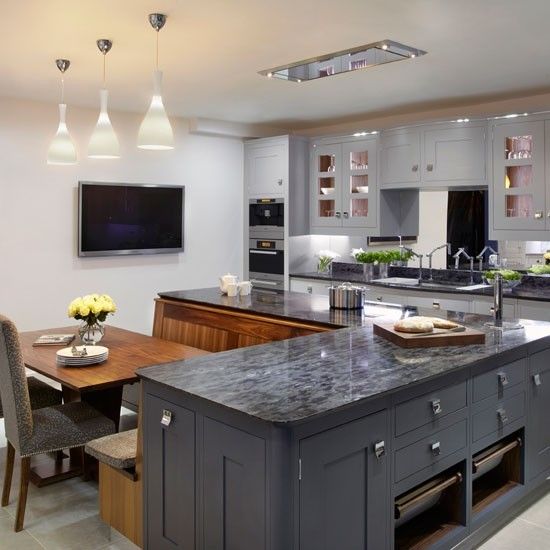 However beyond, behind modern Crittall-style doors sits a stylish and contemporary dining room that sets the ideal scene for a sophisticated dinner party.
However beyond, behind modern Crittall-style doors sits a stylish and contemporary dining room that sets the ideal scene for a sophisticated dinner party.
Zone with wallpaper
Dunelm
Give the living area of an open-plan room a homely atmosphere with an on-trend, wallpapered feature wall. Refreshing botanical-print wallpaper gives this small but neutral space a pop of pattern and colour that's perfectly in keeping with the industrial-style space.
Invest in smart storage
When using a large open-plan space for many uses clever storage will be a hero. Closed storage positioned perfectly will keep utensils and hidden but ready for use. This chic black, textured cupboards makes open-plan dining a doddle.
Modernise with a mezzanine
Oliver Barr
If you have particularly high ceilings or are converting an airy barn-style space, think about incorporating a mezzanine floor into your design. Whether used as a seating nook, library or study, it will allow you to create a more intimate room within your airy open-plan living area. In this scheme, translucent barriers add a contemporary feel while still allowing a seamless flow between the two levels.
Whether used as a seating nook, library or study, it will allow you to create a more intimate room within your airy open-plan living area. In this scheme, translucent barriers add a contemporary feel while still allowing a seamless flow between the two levels.
Connect the garden
Lifestyle Floors
Glazing isn't just useful for drawing natural light indoors. By introducing floor-to-ceiling glass doors, you will open your living spaces up to the garden, creating a seamless flow. Your backyard will also instantly become an extension of your interior, enhancing the sense of space, adding usable inches to your home. Make the transition outside even more seamless by matching the internal flooring with that of your external patio.
Impart plenty of personality
Johnlewis.com
Large open-plan living rooms can lack character so adding personal objects will make the space feel homely.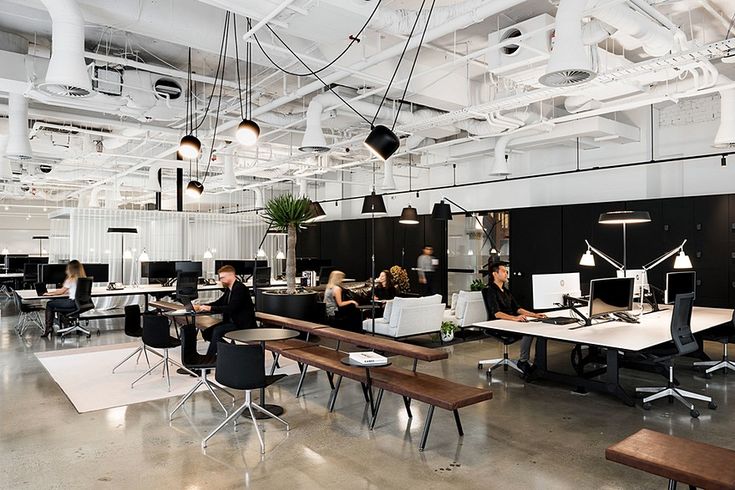 Rich teal creates an interesting base for this picture wall, creating a flexible focal point that anchors the scheme. Mid-century furniture and pops of mustard and terracotta add to the eclectic look of this inviting family space.
Rich teal creates an interesting base for this picture wall, creating a flexible focal point that anchors the scheme. Mid-century furniture and pops of mustard and terracotta add to the eclectic look of this inviting family space.
Divide with plants
HomeSense
While accent colours can unify distinct zones in a large, open-plan room, they’re not the only tool in a decorator’s arsenal. If you’re more of a minimalist, instead of disrupting a crisp, clean scheme with superfluous hues, why not turn to Mother Nature instead? Vibrant foliage and houseplants are a great way to create a visual connection between different areas without compromising on a streamlined aesthetic.
Darken the walls
Porcelain Superstore
A large open space with plenty of light creates a fabulous canvas to experiment with colour. Dark paint shades will create a cosy and contemporary vibe when teamed with concrete-style flooring. Add to the ambience with feature floor lights and gentle spotlighting overhead to boost the moody atmosphere in the evening.
Add to the ambience with feature floor lights and gentle spotlighting overhead to boost the moody atmosphere in the evening.
Embrace broken plan
Cuckooland
If a fully open-plan space seems too extreme, then a broken-plan layout might work better for you and your lifestyle. This semi-open floor plan allows you to break up a large living area with room dividers, furnishings or accessories. You can use this technique to define different zones for different tasks to help you make the most of every inch of space.
Sink a space
If you prefer modern open-plan living spaces with no walls or room dividers, there are other ways you can create a subtle distinction between functional areas. In this light-filled multiuse room, the sleek kitchen and dining area sit at floor level, while the floor has been lowered to create a cosy sunken TV area—a modern take on a mid-century conversation pit.
Bring in a barn door
George Home
Give your open-plan living space a rustic touch by installing a barn door.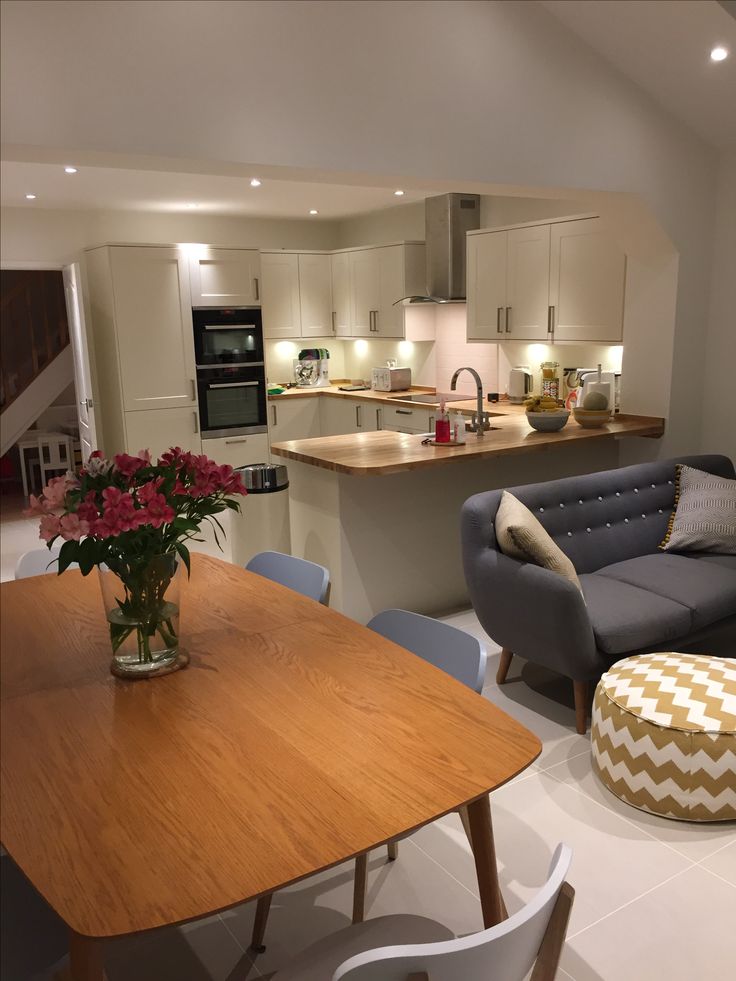 Sometimes a little privacy might be needed, so sliding a barn door into place as a temporary divide between zones is an on-trend solution—just the ticket for a cosy movie night or an intimate dinner.
Sometimes a little privacy might be needed, so sliding a barn door into place as a temporary divide between zones is an on-trend solution—just the ticket for a cosy movie night or an intimate dinner.
Go dramatic
Carpetright
A large open space with plenty of light creates a fabulous canvas to experiment with colour. Dark paint shades will create a cosy and inviting vibe when teamed with warm oak flooring. Add to the ambience with pendant feature lights and gentle spotlighting overhead to boost the moody atmosphere in the evening.
Plan it out in advance
A great way to ensure an open-plan layout will work for you is it plan out furniture placement in advance. If you're planning on moving to an open-plan home, or you're renovating your current property, then sketch out room layouts and map out where your furniture and zones will go. If you already have access to the space, use masking tape on the floor to represent each piece of furniture.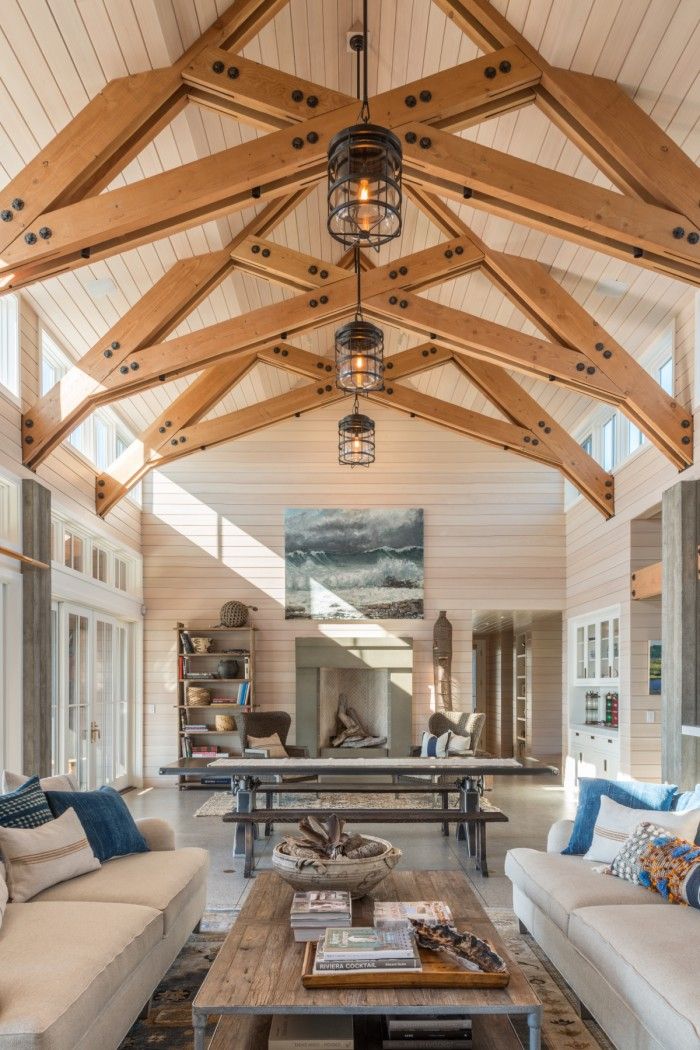 This way, you'll be able to see whether each item will fit and how the rooms will work together.
This way, you'll be able to see whether each item will fit and how the rooms will work together.
Design around your daily needs
Johnlewis.com
Before you begin creating your dream open-plan interior, take a moment to consider how you will use it from day to day. Do you want to make the ultimate entertaining space or a relaxing haven for cosy nights in? An open-plan layout can add real wow factor to a home, but remember that the space has to work for you and your lifestyle, too. Understand your main needs and think about how many people will be using each space and for what purpose.
Don't neglect soundproofing
Darlings of Chelsea
Open-plan living is great, but by removing walls privacy is reduced and noise is amplified. Therefore, soundproofing is the key to a successful design. Opt for soft flooring to minimise noise and incorporate plenty of soft furnishings like heavy curtains and cushions to absorb sound, especially if you have high ceilings that can amplify noise.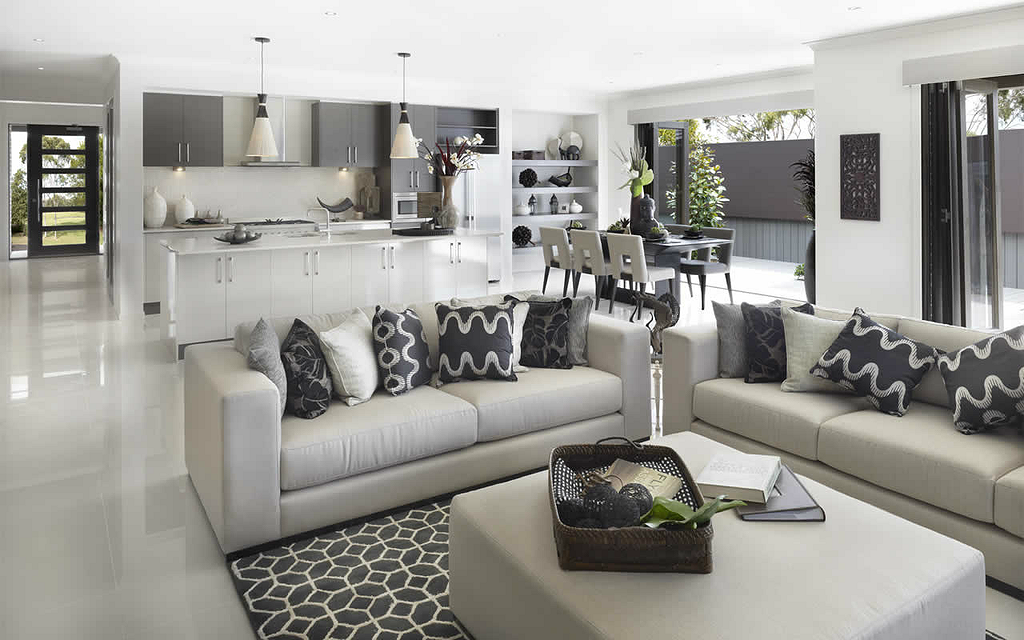
Reinvent a period property
Open-plan isn't just for modern homes. In fact, opening up a period property can add serious wow-factor. Often, rooms in older homes can feel dark, dingy or cramped, so knocking through to open rooms up can be a great way to add practical living space, value and natural light. You can even open up doorways to create a seamless flow without knocking down walls. Before undertaking any work, be sure to look into planning permission and permitted development rules.
Design around your dimensions
Alvhem
Not every multifunctional living space is square or rectangular—instead of trying to make your room fit into a formulaic open-concept layout, embrace unusual dimensions and create a design that works with the eccentricities of your space. In the U-shaped floor plan of this Scandinavian loft from Alvhem, a long dining table fits snuggly in the thoroughfare between the kitchen zone and the lounge.
Bring in a bold contrast
If you want to create carefully defined living areas within a free-flowing space, don’t be afraid to give different functional zones radically different personalities. In this contrasting scheme, the kitchen features moody grey plaster-effect walls, dark wood furnishings and coordinating appliances. Meanwhile, the adjacent lounge offers a completely different ambience with its bright white walls, light pine shelving and colourful statement furniture.
Slip in storage
Alvhem
Don’t be afraid of squeezing more functional zones into your open-concept layout. This compact room divider has been fitted with coat hooks and shoe cubbies, as well as higher shelves for bags and accessories. Not only does it add valuable storage space, but it helps define the transition between the kitchen and dining area in this snug multipurpose room too.
Make lighting striking
Lighting Lover
Consider how you're going to light your space right from the get-go in order to plan for the electrical wiring and sockets required.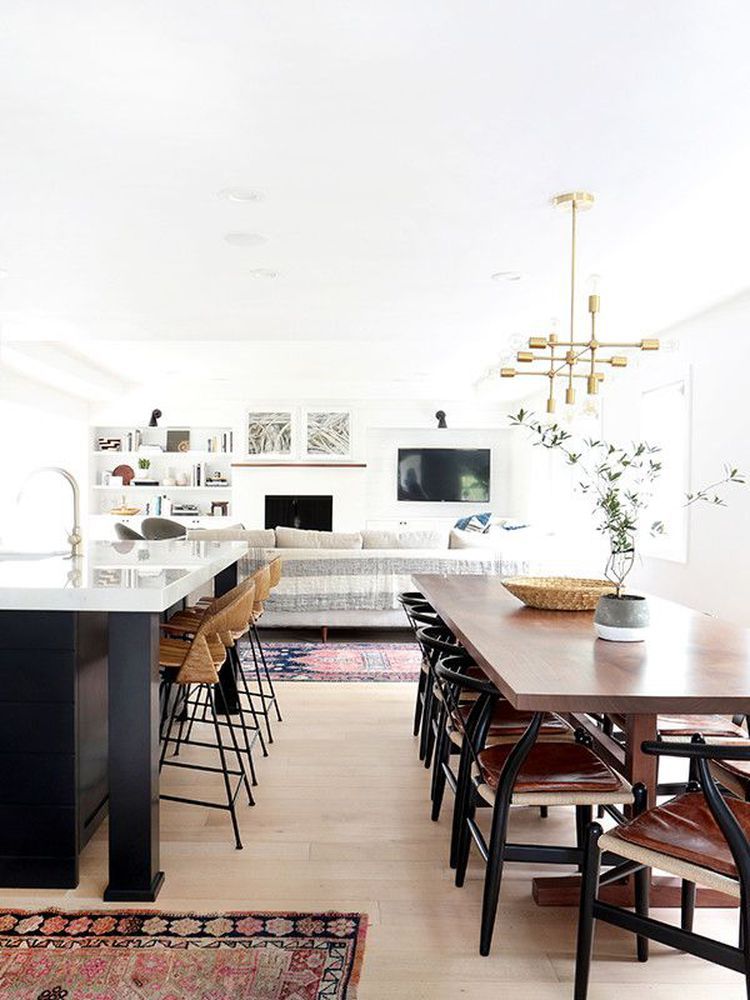 Options include stylish pendant lighting to illuminate a kitchen island, a cluster of pendant lights over a dining table, downlighters over the worktops and brighter spots that can be dimmed in your main lounge area.
Options include stylish pendant lighting to illuminate a kitchen island, a cluster of pendant lights over a dining table, downlighters over the worktops and brighter spots that can be dimmed in your main lounge area.
Unify with a theme
Dunelm
Create a cohesive look in a large, multiuse space by embracing a unifying theme. Here, a subtle coastal scheme works hard to tie together the living room and dining area. Deep blue walls and furnishings create a visual connection and draw the eye through the adjacent spaces, while jute and rattan accessories complete the harmonious feel.
Add a double-sided fireplace
DRU Fires
Try to give each distinct area of your room its own focal point. In the kitchen, it could be the island unit or the range cooker. In the dining space, it might be a dramatic pendant light. In the living area, a fireplace is ideal. Here, a fireplace has been built into a small partition wall between the dining and living space for a designer look. And, if you thought you needed a chimney for a fireplace, think again: the latest bio-ethanol fires don't require a flue and can be placed anywhere.
Here, a fireplace has been built into a small partition wall between the dining and living space for a designer look. And, if you thought you needed a chimney for a fireplace, think again: the latest bio-ethanol fires don't require a flue and can be placed anywhere.
Keep thoroughfares clear
Cuckooland
An open-plan room is often a busy space with lots of foot traffic. Keep floors and walkthroughs clear by choosing slimline sideboards and fixing the TV onto the wall. As audiovisual technology moves on, television sets are getting thinner and lighter so they are much easier to mount. Narrow, unobtrusive furnishings are a particularly good idea if you have young children around.
Add a corner sofa
While there are so many styles of sofa to choose from, a large corner or L-shaped sofa is a great way to zone off your lounge in an airy open-plan space. For something practical and durable, go for a tactile family-friendly fabric like leather.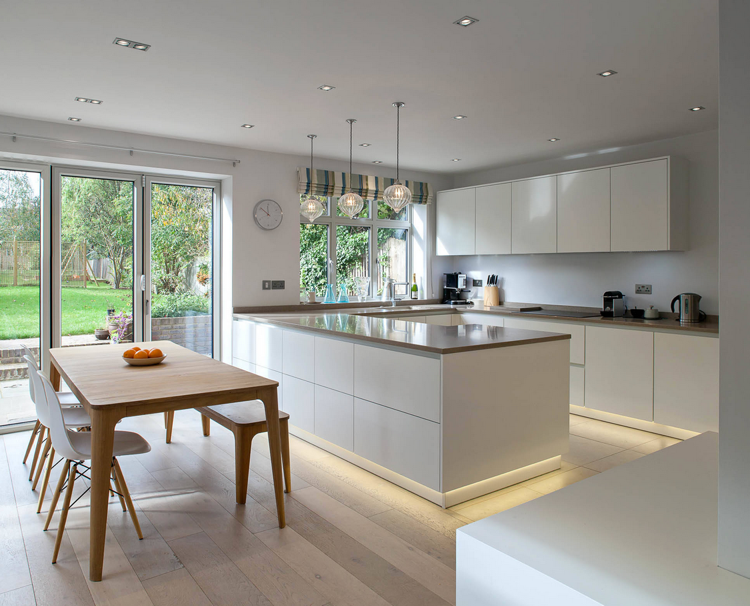 An inviting focal point, complete the relaxed vibe with a rug, coffee table and plenty of soft cushions.
An inviting focal point, complete the relaxed vibe with a rug, coffee table and plenty of soft cushions.
Don't overlook heating
It goes without saying that due to the lack of walls, open-plan living rooms can become cold and drafty quickly. Many homeowners overlook the fact that a single radiator is powerful enough to warm a closed-off space, but not a large, open room. So, before you knock down walls, hire a heating engineer to check whether your current boiler and radiator set-up will be enough to heat your home. You may need to consider extra heat sources, such as underfloor heating, which could increase your energy bills.
Turn up the texture
If your open-plan room was originally designed for a use other than living in, it might require a little bit more softness and comfort to make it a space you'll want to spend lots of time in. Make sure it has plenty of homely character by using natural elements such as wood flooring, textured soft furnishings and lush houseplants. Add cushions to sofas, go for long drapes and layer rugs to make it cosy and inviting.
Add cushions to sofas, go for long drapes and layer rugs to make it cosy and inviting.
Make walls mesmerising
Use wall art to visually divide open-plan areas into discreet zones. Gallery walls with family photographs will personalise your living areas, whereas neon wall lighting looks quirky and adds atmosphere to dining or home office areas.
Partition with glass
Sliding glass doors or panels are a very effective way of dividing an open-plan space into smaller zones while ensuring plenty of light flows through the entire area. Here, a dividing wall has been half-glazed with panels to separate the living area from the kitchen-diner without the space feeling like two disconnected rooms.
Impart flexibility with pocket doors
P C Henderson
If you don't like the idea of using internal glass, there are some alternatives that will allow you to impart flexibility into your open-plan design.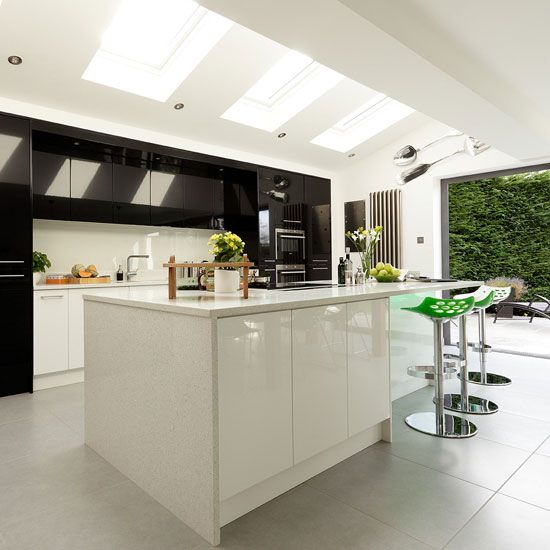 Sliding pocket doors, which literally disappear into niches in the wall, will enable you to open up spaces when you want to, and close them off again whenever the need arises. This approach is particularly useful for those with children, as it means you can create zones, increase privacy and reduce interior noise flow.
Sliding pocket doors, which literally disappear into niches in the wall, will enable you to open up spaces when you want to, and close them off again whenever the need arises. This approach is particularly useful for those with children, as it means you can create zones, increase privacy and reduce interior noise flow.
Slot in an eating space
Maisons du Monde
Make furniture multifunctional. The slimline design of this bistro-style bar table is perfect for a quick meal and also makes good use of space by separating the kitchen from the living room in a small area. This one has extra storage shelves on the side to keep tableware. It can then be easily moved to the side of the room when more floor space is required.
Zone with furniture
Norsu Interiors
Use furniture to zone off an airy open-plan space in need of structure. This modern living area is divided into thirds thanks to carefully arranged fixtures—the breakfast bar separates the kitchen and dining zones, while the sofa creates an intimate seating nook that’s distanced from the busy culinary space.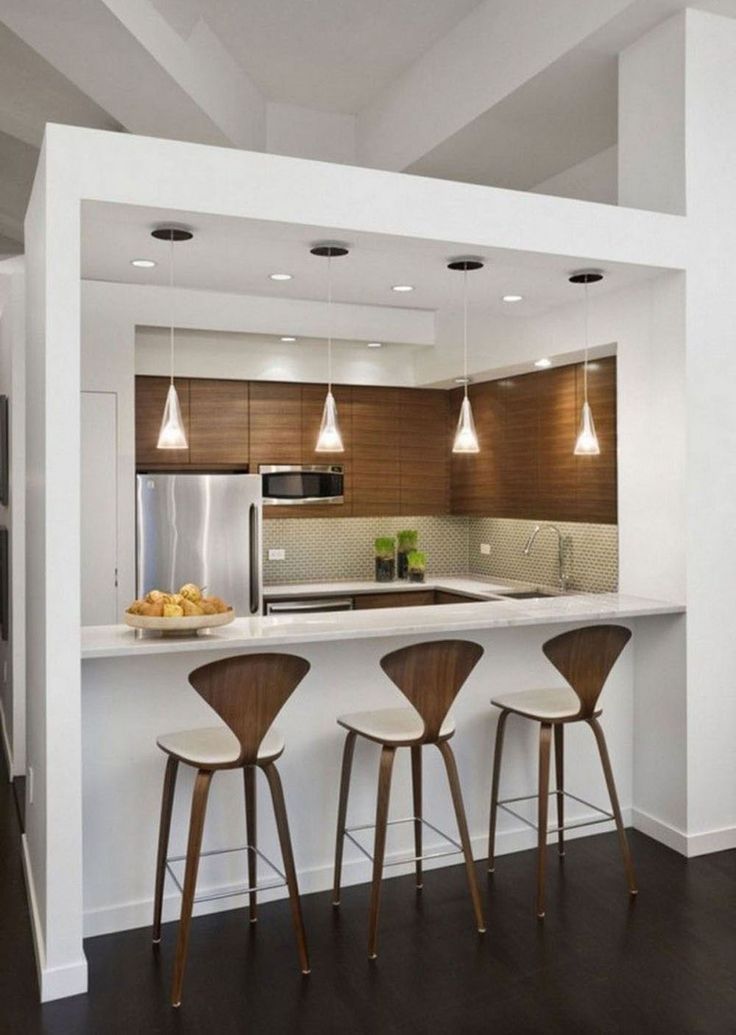
Choose an L-shaped layout
If you're extending your home or knocking down or repositioning walls to create a whole new open-plan space, think about making it L-shaped. It's easier to break a room up if it isn't a standard square or rectangle shape. An L-shaped room will allow you to create a hidden eating or sitting space in a corner—this layout tucks the kitchen neatly away when required.
Make the stairs the star
The Sofa Workshop
Stairs can add a striking architectural feature to open-plan rooms. This industrial-style open-plan living room has a rustic vibe thanks to the factory-style iron staircase and exposed brick wall. The apothecary drawers and metal coffee table bring the whole look together.
Make the staircase disappear
Harvey Jones
At the other end of the scale, if you prefer your staircase to blend into the backdrop paint the steps and banister the same colour as the walls. Here, this minimalist staircase has open risers and a ceiling-hung balustrade so it appears to float in the room, offering a stylish and space-saving addition to this contemporary open-plan living room.
Here, this minimalist staircase has open risers and a ceiling-hung balustrade so it appears to float in the room, offering a stylish and space-saving addition to this contemporary open-plan living room.
Choose a monochrome palette
Johnlewis.com
When it comes to the heart of the home, living rooms are overtaking kitchens so a stylish open-plan communal space that provides room for relaxing, working, exercising and dining is the key to success. This industrial-style open-concept room uses easygoing modern furniture, cosy texture and lush greenery to make it homely. The large space is then pulled together with black accents and a soft white palette.
Add a privacy curtain
Johnlewis.com
A clever way to create temporary walls, curtains are affordable and very easy to install. Add a curtain track to the area of the room you'd like to screen off and hang made-to-measure curtains or voiles to get the right floor-to-ceiling length.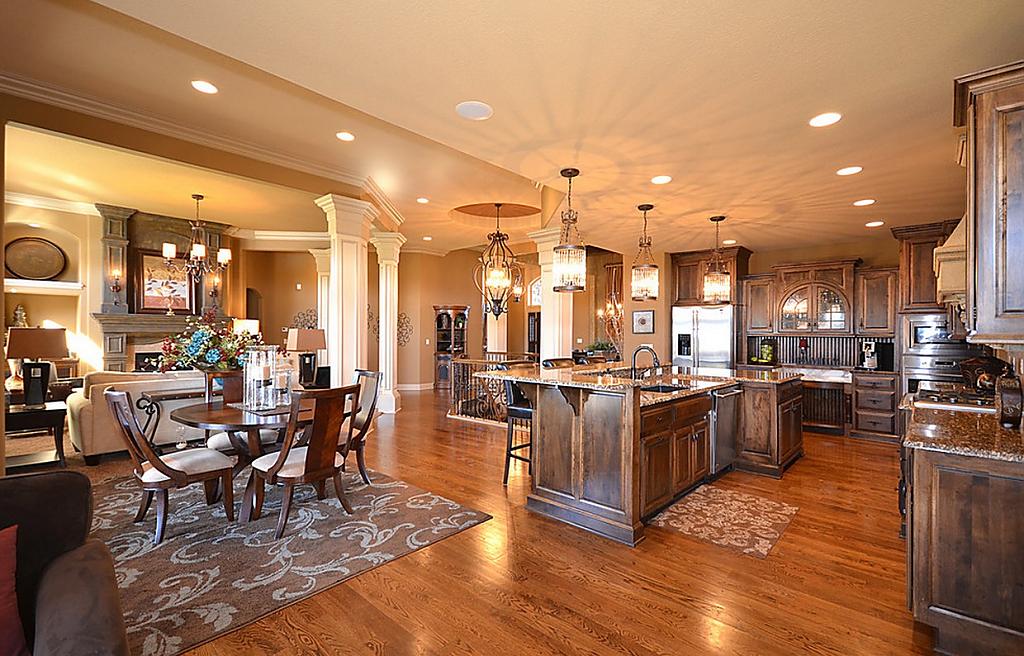 If the zone is in the middle of the room, choose a double-sided design that looks good from both sides.
If the zone is in the middle of the room, choose a double-sided design that looks good from both sides.
Create a coherent backdrop
Help create a flow in a small open-plan space by making sure the backdrop is predominantly the same colour. Here, walls, kitchen cupboards and furniture are variants of the same tone to make the room feel spacious and cohesive. Two statement chairs and a panel of wallpaper add pretty and subtle interest.
Utilise the side return
Harvey Jones
A small expansion such as a side return extension will enlarge an open-plan space to accommodate a kitchen-diner and living space in one. It's a popular route to open-plan living in older homes—if your home is dark, opt for a skylight in the ceiling to flood the space with light.
Make walls two-tone
Unify a small open-plan living room with an on-trend paint technique. When space is tight, look to the upper portion of the walls and the ceiling.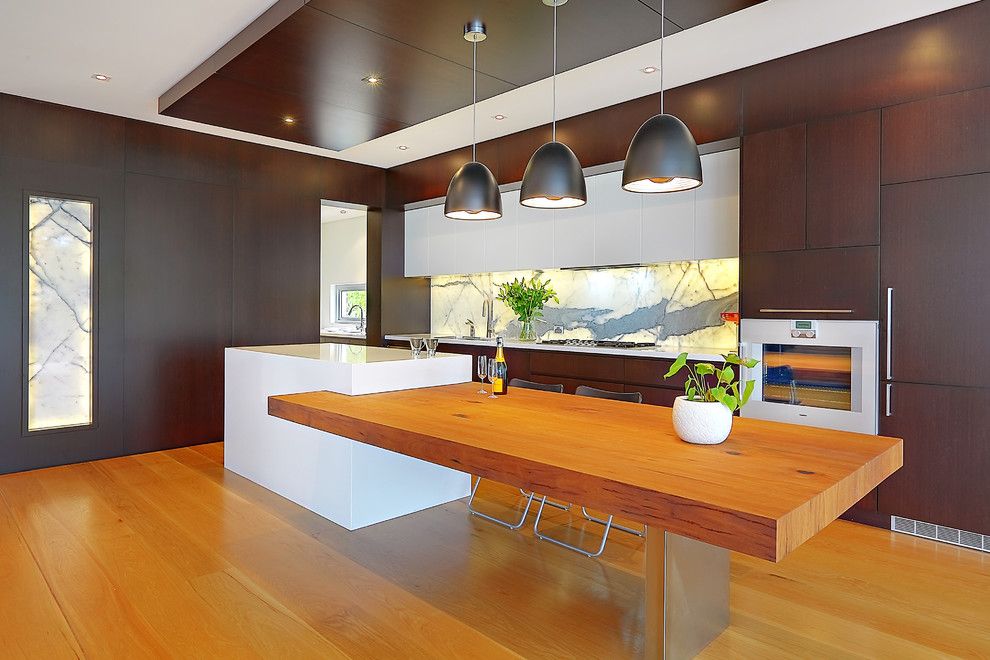 Paint this upper area a refreshing shade to make a statement across the entire room. Choose crisp white for the lower parts of the walls to create contrast; it will also reflect the light and maximise the feeling of space. Blonde wood and white furniture set against the walls add to the vibrancy of this invigorating room.
Paint this upper area a refreshing shade to make a statement across the entire room. Choose crisp white for the lower parts of the walls to create contrast; it will also reflect the light and maximise the feeling of space. Blonde wood and white furniture set against the walls add to the vibrancy of this invigorating room.
Bring in bookcases
Open-plan living rooms with floor-to-ceiling windows are usually light-filled and airy, however, storage space can become tricky. One solution is to place back-to-back bookshelves in the centre of the room as a divider. Glass doors will keep colour-coordinated books dust-free and why not install ambient lighting on top to create an atmospheric evening glow too?
Maximise natural light
Masterclass Kitchens
Before planning your open living zones, think about natural light sources. The brighter a room, the more inviting and spacious it will feel. To maximise light flow and create a stylish indoor-outdoor living space, install large floor-to-ceiling sliding, bi-folding or Crittall-style glass doors.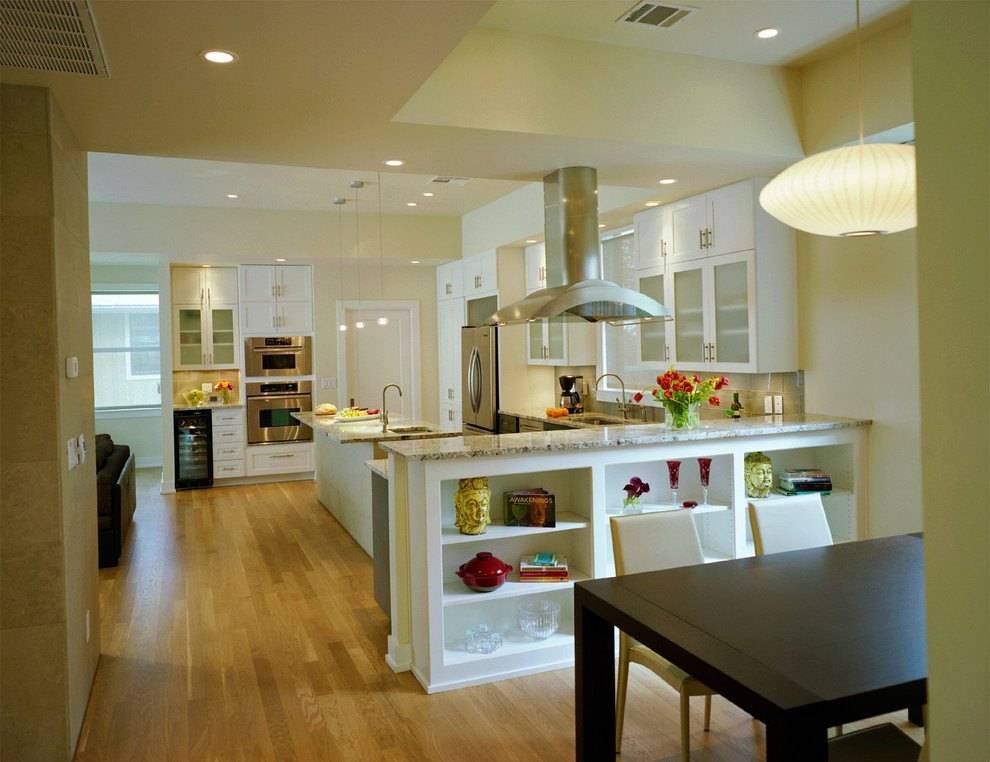
Play with paint
Snug Sofa
A bold feature wall makes a striking addition to a home and creates a clear visual link between adjacent living areas. Painting the walls opposite each other the same hue can elongate a small space, while a strong focal feature can really add wow-factor.
Zone functional areas with flooring
Walls and Floors
A larger open-plan space allows you to be more creative with your flooring options. It's possible to mix and match different types of flooring to help separate living zones, as long as the flooring types complement each other and create a cohesive flow. Here, porcelain tiles have been used in the kitchen area, blending into warm wood floors elsewhere. The patchwork-effect floor is then repeated in the central space to define the living area.
Dine around a circular table
Norsu Interiors
Narrow open-plan rooms will benefit from swapping out a standard dinner table for a round design.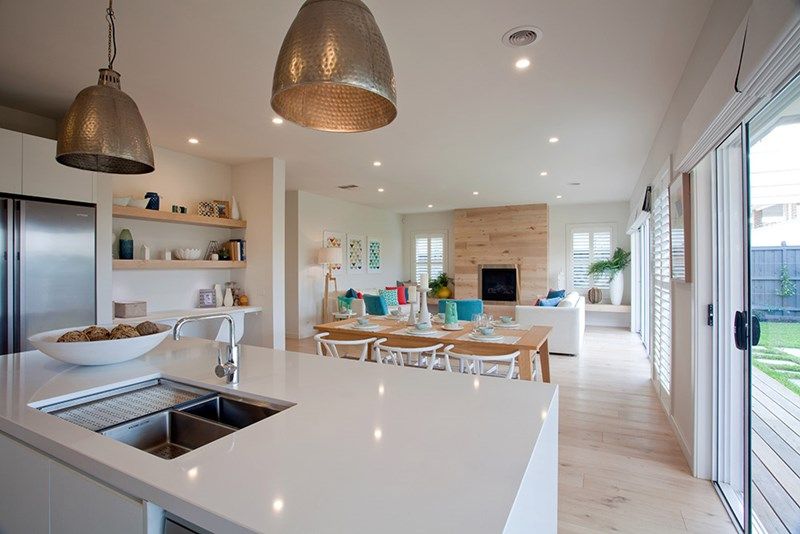 The curved edges take up much less floor space, creating a mini kitchen-diner in an especially snug area. Here, a built-in bench allows the table to sit towards the side of the room to allow plenty of passage for through traffic.
The curved edges take up much less floor space, creating a mini kitchen-diner in an especially snug area. Here, a built-in bench allows the table to sit towards the side of the room to allow plenty of passage for through traffic.
Create cohesion with wallpaper
Farrow & Ball
If your multiuse space feels unharmonious and disjointed, a bold design choice can be the unifying element you need. This Art Deco-inspired wallpaper helps tie together the kitchen and dining space with ease, creating a colourful feature wall that balances out the crisp white table and island.
Celebrate structural features
Hamptons International
If your open-plan space has characterful features like exposed beams or support columns, don't try to disguise them. Instead, let these architectural quirks enhance your scheme for a completely unique interior.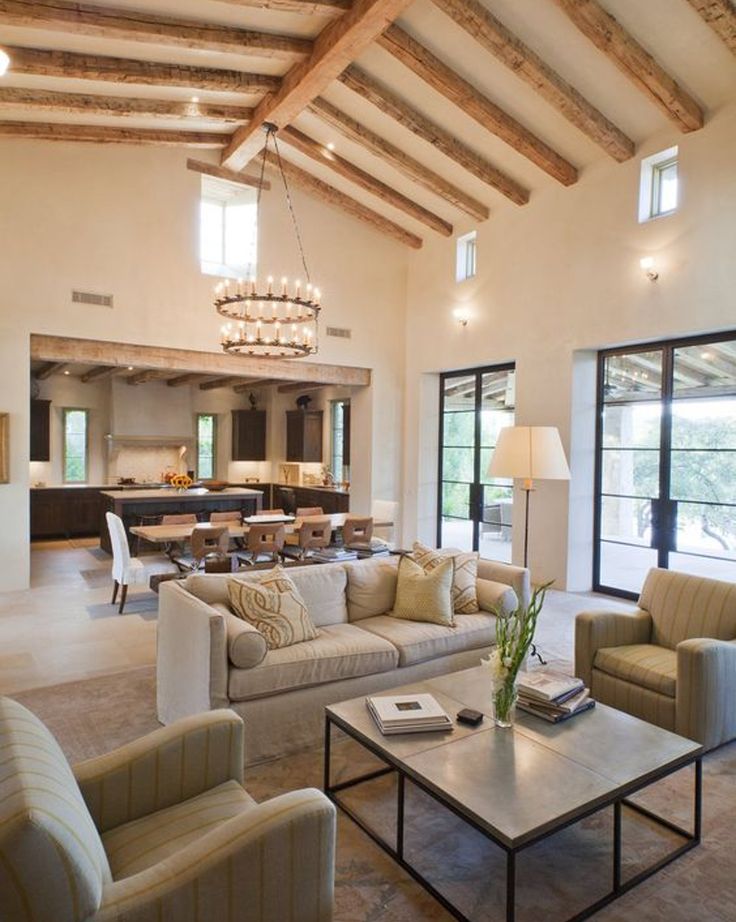 In this beautiful barn conversion, characterful woodwork and an original brick hearth frame a charming country-style living space.
In this beautiful barn conversion, characterful woodwork and an original brick hearth frame a charming country-style living space.
Conceal your kitchen
For a cohesive open-plan space, make the kitchen area as unobtrusive as possible with clever design and sleek finishes. Here, the kitchen units run along the back wall and are raised off the floor. The unit fronts are simple, contemporary and handleless, plus they fit in with the scheme's chocolate brown tonal palette. When not in use, this kitchen has the air of a smart sideboard at the edge of the dining space. This would look equally as good in a classic white or sleek black scheme.
Slot in a desk
Sharps
A home without walls means you may have to factor in multipurpose spaces. Create a hardworking home office that's still part of the wider scheme with a desk that's in keeping with your décor. Don't neglect smart storage either, as it'll be on display all the time. If privacy is an issue, you could close off the area with a curtain or freestanding screen.
If privacy is an issue, you could close off the area with a curtain or freestanding screen.
Pick flooring for all zones
The Porcelain Superstore
Using the same flooring throughout your open-plan living room will maximise the sense of space. Choose a coherent material that is slip-resistant and will withstand spillages in the kitchen, yet look timeless and soothing in the living area.
Divide with shelving
Tile Mountain
To give a large room instant shape and structure, use freestanding furniture to differentiate the various areas. A simple shelving unit placed between the lounge and dining space is an easy way to zone a large multiuse space, plus it'll give you practical extra storage.
Make it work for everyone
This plain rectangular room has been transformed into an inviting hub that's perfect for family life. Two sofas are socially positioned in an L-shape, while wall-hung storage will keep a busy space organised from day to day.
Two sofas are socially positioned in an L-shape, while wall-hung storage will keep a busy space organised from day to day.
Streamline appliances
Optiplan Kitchens
When your kitchen is part of a larger living space, it's regularly on show to visitors. It's not ideal if guests can see your socks spinning around in your washing machine, and you don't want your white goods to make such a din that you can't hear the TV, either. Go for integrated machines that can be hidden behind cupboard doors and buy the quietest possible models. Integrated fridges, freezers and dishwashers will also make your kitchen look sleeker.
Duplicate furniture
Masterclass Kitchens
Consistency is key and will make your open-plan home look streamlined and elegant. Create a visual link between spaces by choosing matching furniture. Here, pale neutral walls allow black fixtures and accessories to become the main feature, seamlessly blending one zone into another.
Put a peninsula to work
Kebbell Homes
A peninsular unit that juts out at a right angle from a wall of units can help you to create a natural barrier between your kitchen and the rest of the space. It can also provide useful additional countertop and storage space for the kitchen while doubling up as a breakfast bar too.
Add a skylight
Westbury Garden Rooms
In large open spaces with windows limited to one aspect, the area in the middle can often be starved of light. Installing a skylight or a glass lantern can make the world of difference, bathing the heart of the room in natural light. Install electric blinds on those lightwells too, so when you do want a cosy feel at night it's easy to shut out the outside world.
Wheel in furniture
The great thing about an open-plan space is that it can be easily rearranged to set a whole new scene as and when you need.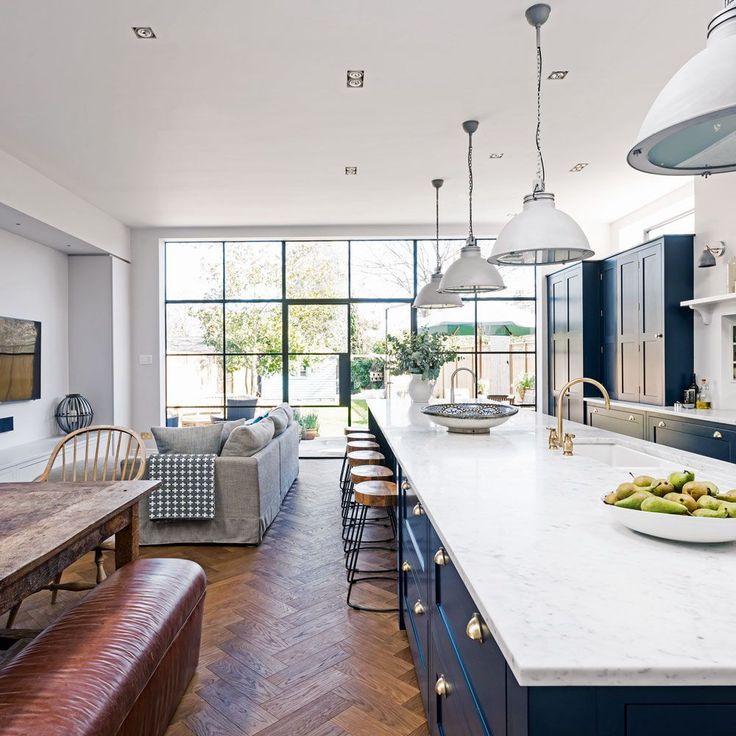 If you want your room to be really versatile, invest in furniture with wheels. This coffee table, for example, can be easily pushed against the wall within seconds. It's also possible to purchase sofas, dining tables, bookshelves and even island units that are on castors.
If you want your room to be really versatile, invest in furniture with wheels. This coffee table, for example, can be easily pushed against the wall within seconds. It's also possible to purchase sofas, dining tables, bookshelves and even island units that are on castors.
Step it up
Johnlewis.com
Consider your interior floor plan. Creating a split-level floor in your open-plan space will help to discreetly zone off different areas. Here, a small step takes you up to the light-filled living area. Meanwhile, a step down could be used as a transition into a cosy snug or a more formal dining space.
Make room for play
The beauty of an open-plan living area is that it allows you to watch over young children playing and older kids doing homework, while you kick back and relax or get on with other tasks. Consider including a playmat, study desk or even a games zone in your layout.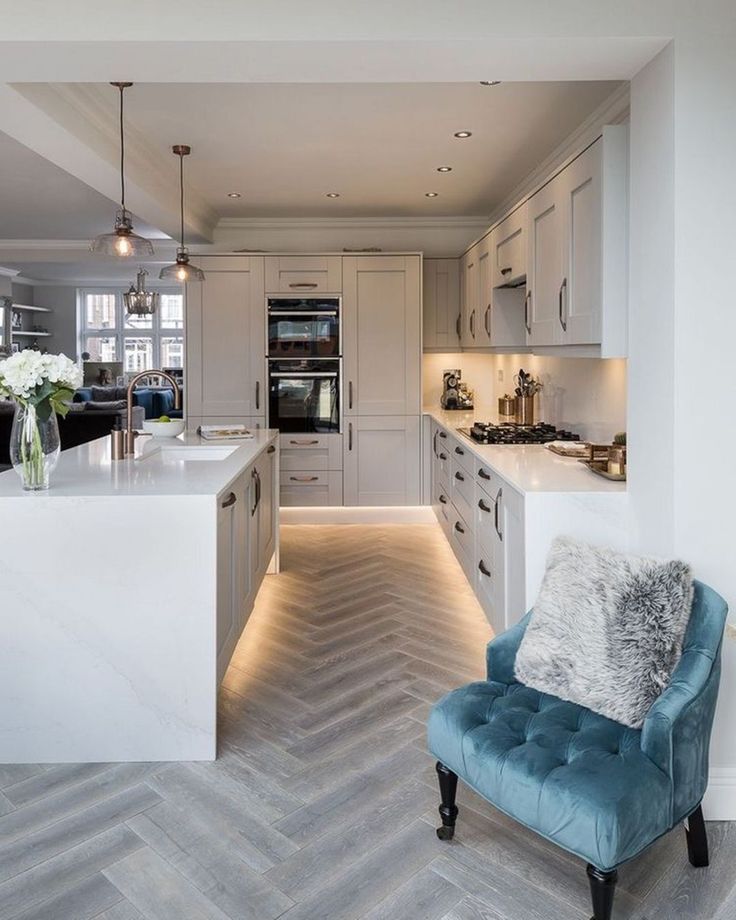 To avoid the space being completely taken over by toys and tech, invest in boxes or baskets that can be tucked away out of sight.
To avoid the space being completely taken over by toys and tech, invest in boxes or baskets that can be tucked away out of sight.
Plump for a partition
KUPRYNENKO ANDRII / Shutterstock
In an open-plan studio flat or small space, a half-wall can work well to screen off the kitchen from the rest of the room without blocking out any light. A neat little breakfast bar has been created on one side of this wall, while the other side supports the TV, which faces out into a cosy living area.
Maximise extraction
JR-stock / Shutterstock
It's wonderful to be able to cook and entertain simultaneously and an open-plan space allows you to do that with ease. What you don't want though is for the whole room to smell of whatever you're cooking, so it's important to equip your kitchen with a high-powered extractor to whisk all those odours away.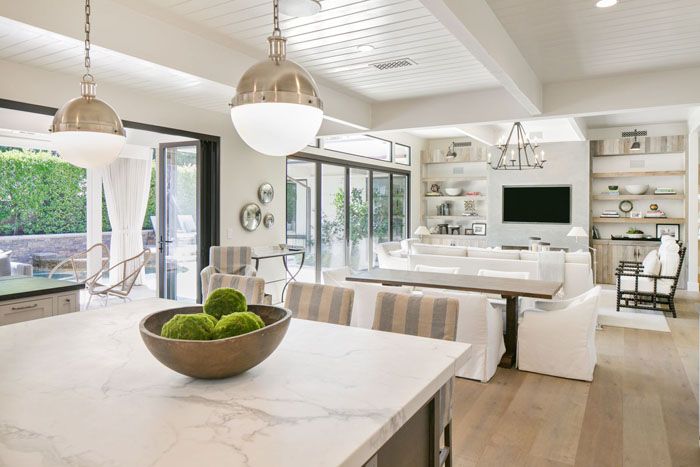
Don't skimp on storage
Rational Kitchens
Keeping an open-plan space tidy can be a challenge – especially if you have a family. The easiest way to stay organised is to have a place for everything. This means investing in a mix of hidden storage and display areas for those more attractive items. Here, the kitchen units, broken up by open shelving, have been taken right up to the ceiling so there's no redundant space.
Colour-code zones
Johnlewis.com
If you want to create a distinction between your living zones without ending up with a jarring, disconnected scheme, decorate each individual area with different hues. Here, deep blue and powder pink armchairs define this sitting area, while pale sage accents dominate the kitchen. Pops of yellow create a cohesive link between the two spaces.
Choose space-savvy furniture
For open-plan rooms where space is at a premium, consider investing in clever furnishings that have been specially made for snug schemes. This angular IKEA table frees up the thoroughfare with its unique triangular design, which can also extend to double the length to accommodate guests when needed.
This angular IKEA table frees up the thoroughfare with its unique triangular design, which can also extend to double the length to accommodate guests when needed.
Choose the right furniture
Darlings of Chelsea
When working with an open floorplan, it's essential that you keep your furnishings in proportion to the space you're working with. Large spaces will require more furniture to add warmth and a sense of homeliness, while smaller spaces shouldn’t be overwhelmed with too many items. You don’t have to choose over-sized furnishings, but consider how each piece will fill the space to avoid empty expanses with no clear purpose.
Loved this? Find more DIY and decorating ideas here
07 February 2023
Interiors
See more on this topic
Be the first to comment
Do you want to comment on this article? You need to be signed in for this feature
22 open-plan living room ideas to create a seamless space
These days you're more likely to find free flowing living spaces than more smaller, closed off rooms. Open-plan living room ideas are a hallmark of contemporary homes, thanks to their ability to cater to nearly any occasion.
Our homes need to be more fluid than ever before, and your choice of living room ideas play a big part in this. After all, you need to create a space that works for the whole family in a range of different situations.
After all, you need to create a space that works for the whole family in a range of different situations.
'We know by now that our homes need to be ready to transform into whatever we need, be that a home gym, classroom or office – often with just a moment’s notice,' says Rebecca Snowden, interior style advisor, Furniture And Choice . 'Creating these dedicated spaces in our home doesn’t have to mean sacrificing style.'
'Open-plan spaces are increasingly popular and are great for entertaining, but can sometimes feel sparse or empty,' continues Martin Waller, Founder, Andrew Martin . 'Use contrasting colours to demarcate distinct spaces and inject personality into different areas of the room. Wallpaper can also be used in certain areas of the space to create a distinct zone.
'Use statement lighting to create different zones, that each have a purpose. Open furniture, such as cabinets, bookcases, or shelving can be used to create different zones, without making the space feel closed in.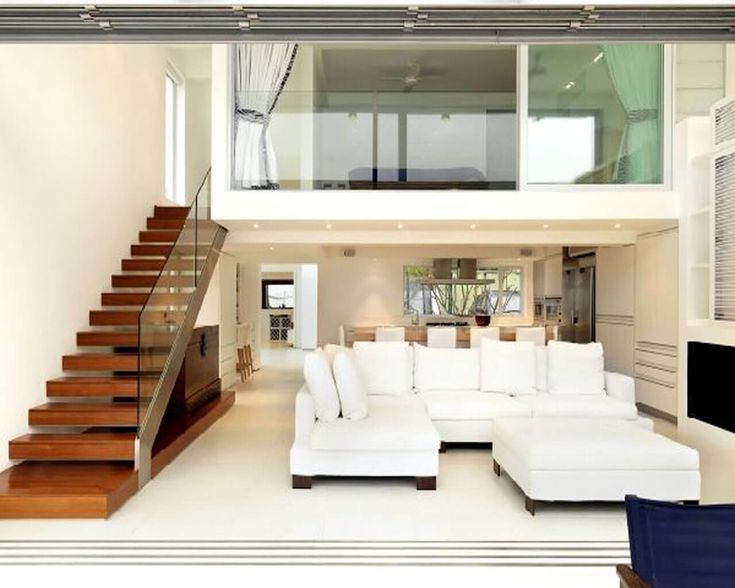 Alternatively, a folding screen can provide privacy, something that is often lacking in open plan living.'
Alternatively, a folding screen can provide privacy, something that is often lacking in open plan living.'
Open-plan living room ideas
'Whether it’s a big project like adding some sliding doors or a divider wall, or simply laying out your furniture in an intelligent way,' says Rebecca from Furniture and Choice, 'there are plenty of ways to create self-contained spaces within open-plan living room ideas in a way that works for you.'
1. Create cohesion through colour palettes
(Image credit: Future PLC/Mark C. O'Flaherty)
'It is easy for the different areas to get lost and feel disjointed if the design is not cohesive,' notes Rob Ellis, Head of Design, dwell . 'So it important to zone the different areas, whilst keeping a common colour palette throughout.'
'Start by deciding how you will use the rooms, for example a distinctive dining space for friends and family, paired with a relaxing living room. To keep a consistent feel throughout, choose similar colours and textures across the two rooms. '
'
'If your scheme is blue, avoid it looking one dimensional by including different tones of blue to create layers and depth. This could be a soft, dusty blue rug under the dining table paired with a statement dark blue velvet sofa.'
This is especially useful in tandem with small living room ideas, as too many colours and textures can be overwhelming.
2. Zone with an oversized rug
(Image credit: Interior Fox/Daniel Villarreal)
You can visually zone spaces without any building work or big projects. A large, oversized rug goes a long way with open-plan living room ideas.
Choose an option which can comfortably fit your sofa, armchairs and coffee table. This 'island' created by the rug becomes a room in its own right, differentiating it from the dining or kitchen areas in the same space.
For modern living room ideas, choose a rug with pattens that reflect the graphic shapes and lines used elsewhere in the area.
3. Use the same flooring throughout
(Image credit: Future PLC/Georgia Burns)
'In today’s modern home, people are choosing open-plan layouts to maximise the feeling of space and light,' says Simon Myatt, Brand Ambassador, Havwoods .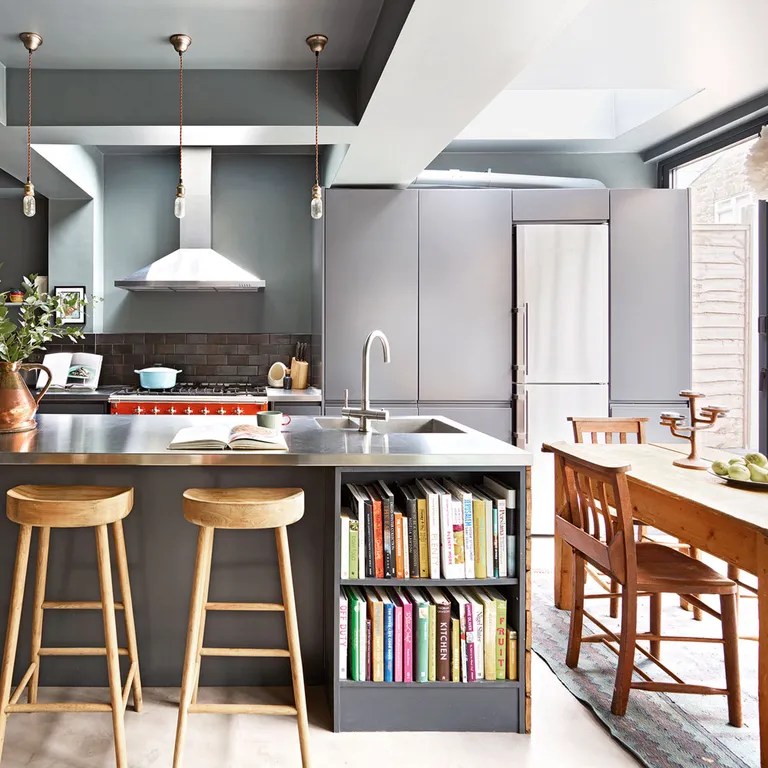 'This remains a popular trend in the living areas, where flooring is used to transition seamlessly from one room into the next, without interruption from door bars or floor strips.'
'This remains a popular trend in the living areas, where flooring is used to transition seamlessly from one room into the next, without interruption from door bars or floor strips.'
'Alternatively, use living room flooring ideas to zone. In this way, you can create zoned areas, perhaps by layering your floorboards in alternate patterns, or choosing slightly different tones or textures.'
4. Make it work for every function
(Image credit: Future PLC/Simon Whitmore)
'An open-plan living area is often a multifunctional space that is home to entertaining, relaxing and dining,' reminds Rob from dwell. And while that it is on the whole a positive thing, it can be tricky to fully visually close off one function to focus on another. For example, tucking away the family/entertainment side of things when you want a relaxed, conservational space, or a WFH location.
Learning how to hide a TV is a great example of the ways you can keep all these elements in one space, but gloss over them when not in use.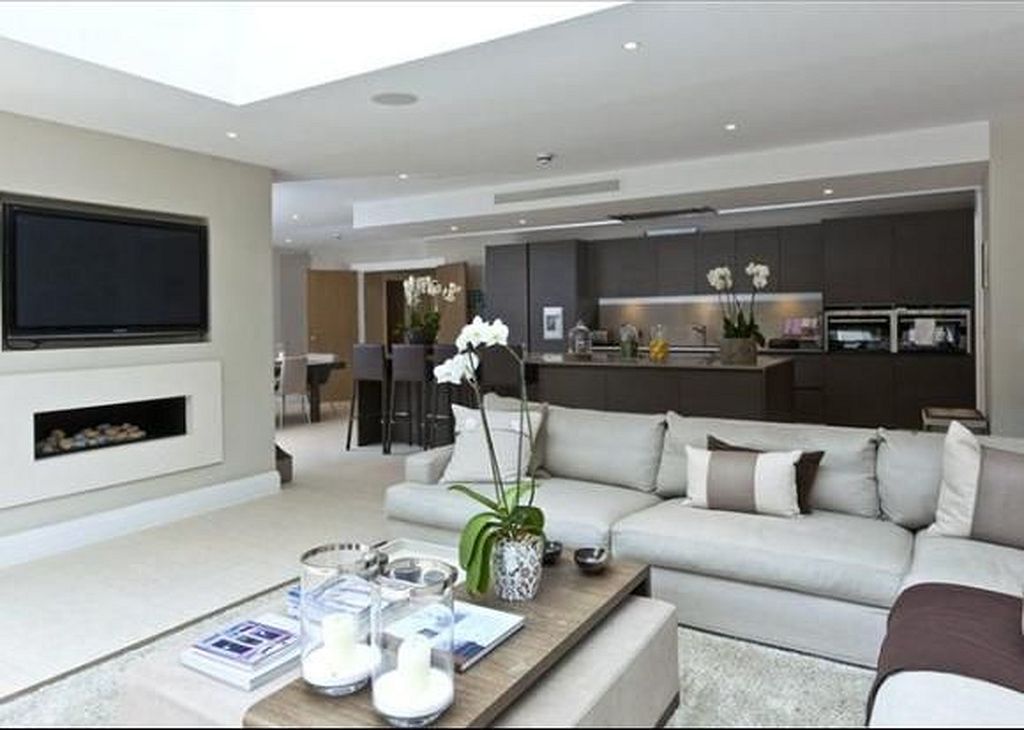
5. Use steps for a subtle division of space
(Image credit: Future PLC/Robert Sanderson)
Not all home layouts are created equal. If you don't have a large, flat space to explore open-plan living room ideas, then think outside the box. A few steps leading to the dining or kitchen space will allow the spaces to stay open and connected, even if on slightly different levels.
This can provide a welcome small feeling of separation for family living room ideas, so you can easily keep an eye on the kids while still feeling as though you each have your own space.
Keep the colour palettes the same across the areas to really hone the link between the spaces.
(Image credit: Future PLC/James Balston)
'When designing an open-plan living room, think about the scheme as a whole,' advises Ann Marie Cousins, Founder, AMC Design . 'The different spaces need definition but there needs to be a thread that ties it all together.'
'So, if you have a navy sofa in your open-plan sitting room with richly-patterned scatter cushions with orange, teal and green, you might then opt for a leather upholstered bar stool at navy kitchen island ideas to merge the two together. '
'
'By bringing colour from one space to the other with pattern and texture, but allowing for differentiation, the spaces will tie together but not match.'
7. Use paint to define different zones
(Image credit: Future PLC/ Jo Henderson)
Open-plan living room ideas needn't be devoid of different personalities for different purposes. Opening up a living room and dining area is great to create a more generous space, ideal for busy family life. But it does blur the lines when it comes to lifestyle choices.
Simple paint ideas on architectural details, such as widened doorframes and arches, helps to gently signify different zones within the open space.
Creating zones within the larger space helps to give a sense of purpose for a living room end to that of a dining area or a kids playroom. This unimposing way of dividing the living space doesn't defeat the object of making it open – it merely gives more structure to how you use the space.
8. Continue a style throughout
(Image credit: Future PLC)
Create a seamless flow from one living area into the next by way of a considered decorating scheme throughout.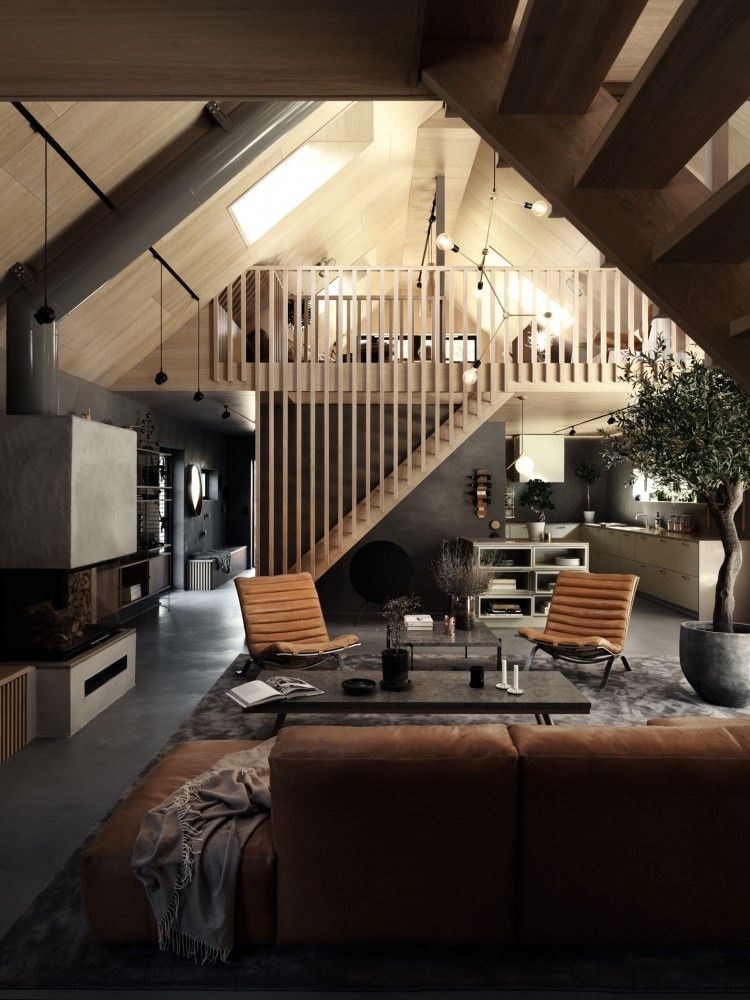
'Keeping a cohesive scheme will allow the style of the space to flow seamlessly from room to room,' explains Juliette Thomas, Founder & Director, Juliettes Interiors.
'Whether that’s using the same paint colour across your living room wall decor or incorporating the same textures across your soft furnishings, from curtains to scatter cushions, this will tie everything in together.'
9. Cheat it with broken plan
(Image credit: Future PLC/ Veronica Rodriguez)
Broken plan is the newer take on open-plan living room ideas. All the benefits of the latter, but allows you extra flexibility.
Replacing traditional doors with a unique glass door frame helps the open layout onto the space beyond. A feat in interior design, using glass in place of hard materials makes the walls disappear - while allowing you to shut off the living room for more intimate use, as and when some 'me time' is needed.
10. Leave a partition wall to benefit both areas
(Image credit: Future PLC/Rachael Smith)
While you may desire the feeling of openness, you might not want to create one vast space that is devoid of structure.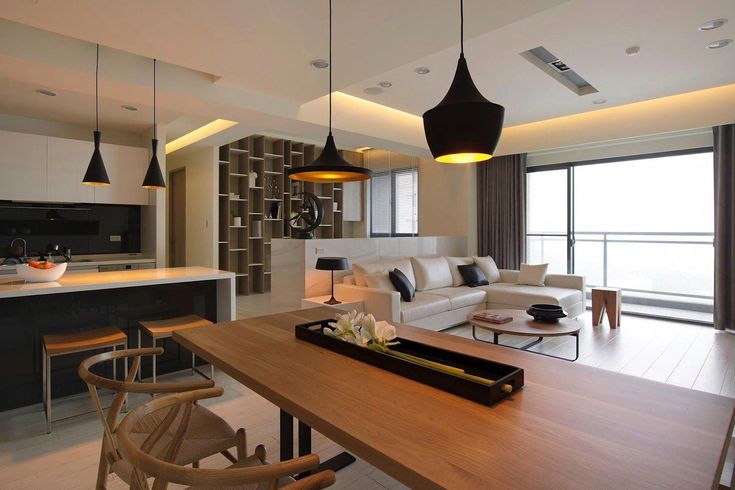 If this is the case consider leaving a section of wall still in place, to divide one end of the room to the other.
If this is the case consider leaving a section of wall still in place, to divide one end of the room to the other.
Having an element of division allows you to retain a living room layout – not losing a wall to place furniture against or hang wall art for instance. A smart space could use the diving wall to situate open living room fireplace ideas to ensure both areas either side of the wall benefit.
11. Add personality with block painted zones
(Image credit: Dulux)
While lounging, eating and working may all take place in one large open-plan area, it doesn't mean you can't zone each area with a different colour. Signify a change of purpose with a splash of colour, with a thoughtful living room paint idea to transform with accent walls.
12. Utilise a neutral scheme
(Image credit: Future PLC/ Rowland Roques O'Neil)
Create an effortlessly sophisticated and inviting open-plan lounge by choosing neutral living room ideas, using the same paint shade and flooring throughout.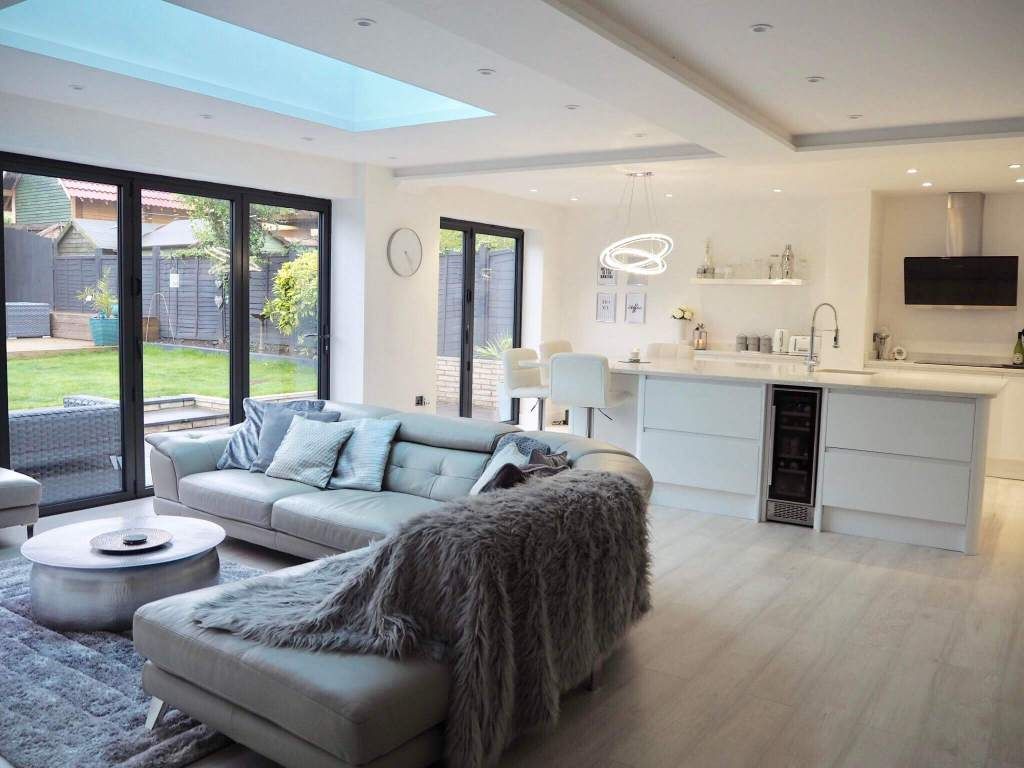
This soft approach helps to make the space feel more grounded, and adaptable for all uses. Echo tonal accent pieces, such as lilac-grey and charcoal, to add soft colour contrasts without making the space feel overwhelmed.
13. Choose a sliding door
(Image credit: Future PLC/ Rachael Smith)
'Sliding doors work well for larger spaces and can really make a difference in a room' explains Rebecca from Furniture and Choice. 'While they require more work to incorporate into a space, including sliding doors into your interior design will enable you to separate an open space with style and versatility.'
'As an example, incorporating a sliding door into your kitchen/dining/living area will provide you with the flexibility to close off one space when you need to. Perhaps for home working, but then seamlessly transform it back into a vibrant space for dining and entertaining when needed.'
14. Create distinct areas with different textures
(Image credit: Future PLC/Polly Eltes)
Instead of zoning with paint colours or furniture, you can go a long way by playing with materials.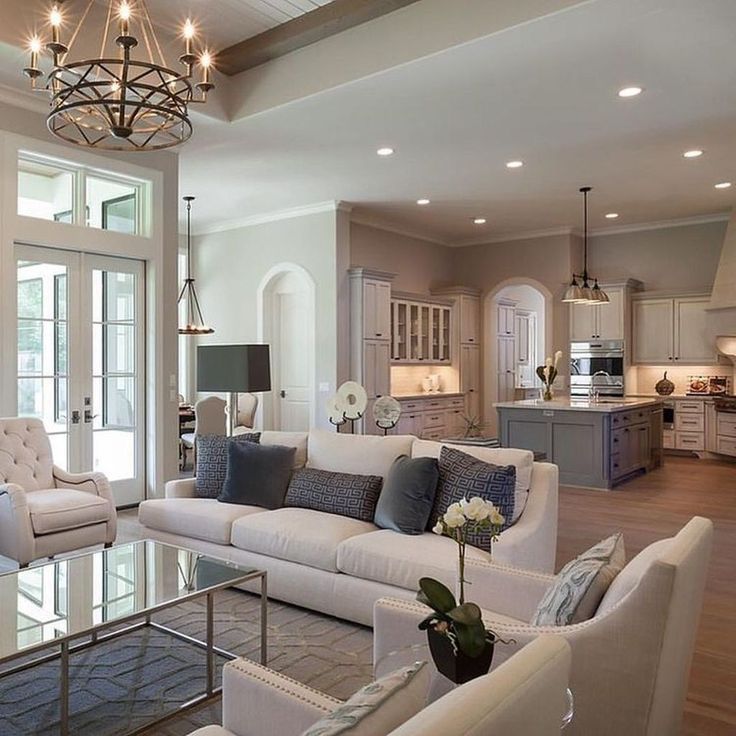 Using different textures can be used to create distinct divides in open-plan living room ideas, separating off the dining or cooking areas.
Using different textures can be used to create distinct divides in open-plan living room ideas, separating off the dining or cooking areas.
You might want to overload the former with softer, plush items to hone the relaxed element of the area, while kitchen ideas or dining spaces may be filled with harder surfaces and materials.
15. Use partitions to display items to reflect the zones
(Image credit: Future PLC/ David Giles)
When planning how to design a living room, partially divide an open-plan space with a central column. Within that partition wall add handy alcoves to provide extra storage and also helps to add a decorative touch.
Each side of the partition can be used to display items relevant to the use of that space. For example, decorative kitchen items in the dining area, and books and plants in the living section.
16. Open up a period property
(Image credit: Future PLC)
Don't let the age of your property deter you from making modern alterations.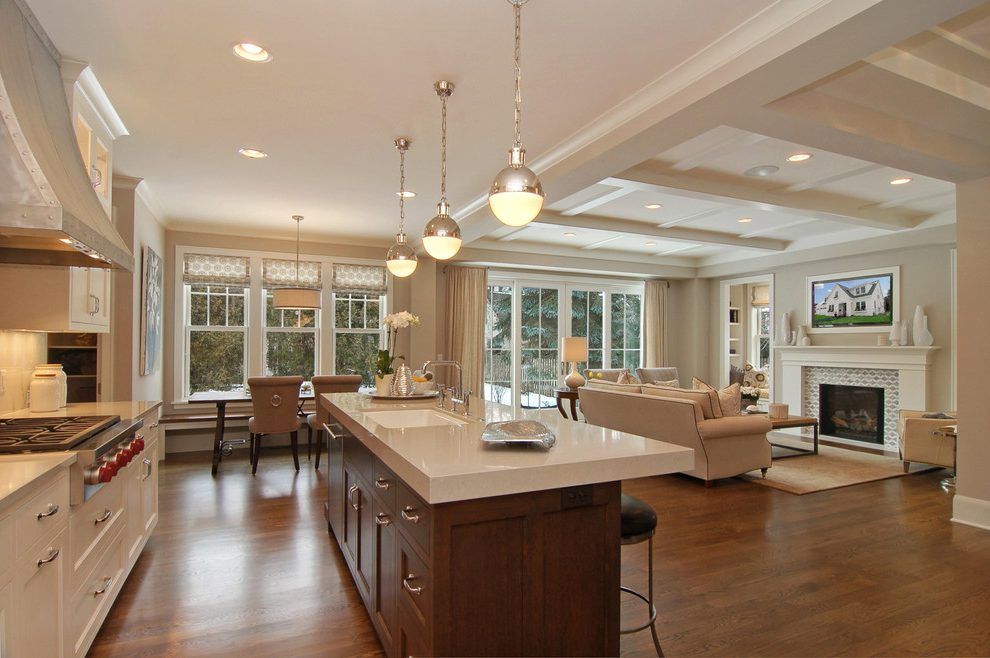 Formal front rooms in older properties can often feel dark and enclosed, so knocking through to form an open-plan living room is a popular choice. Removing a wall between rooms offers greater flexibility for the space and enhances the light in townhouses and terraces particularly.
Formal front rooms in older properties can often feel dark and enclosed, so knocking through to form an open-plan living room is a popular choice. Removing a wall between rooms offers greater flexibility for the space and enhances the light in townhouses and terraces particularly.
Before undertaking any work make sure to consult a structural engineer and research any planning permission required.
17. Make rooms work on another level
(Image credit: Future PLC/Colin Poole)
Not all homes have horizontal ceilings and single-level floors. Highlight these features by building clever storage and outside-of-the-box zones. Play with the levels in tandem with your open-plan living room ideas.
Be savvy with heigh ceilings and create a mezzanine to act as extra living space – such as a home office or guest bedroom. Using a tonal colour palette throughout will help tie the areas together.
18. Boost light and energy with a skylight
(Image credit: Future PLC/ Claire Lloyd Davies)
The beauty of open-plan living room is the sense of space, keeping the mood as light and airy as possible aids this effect.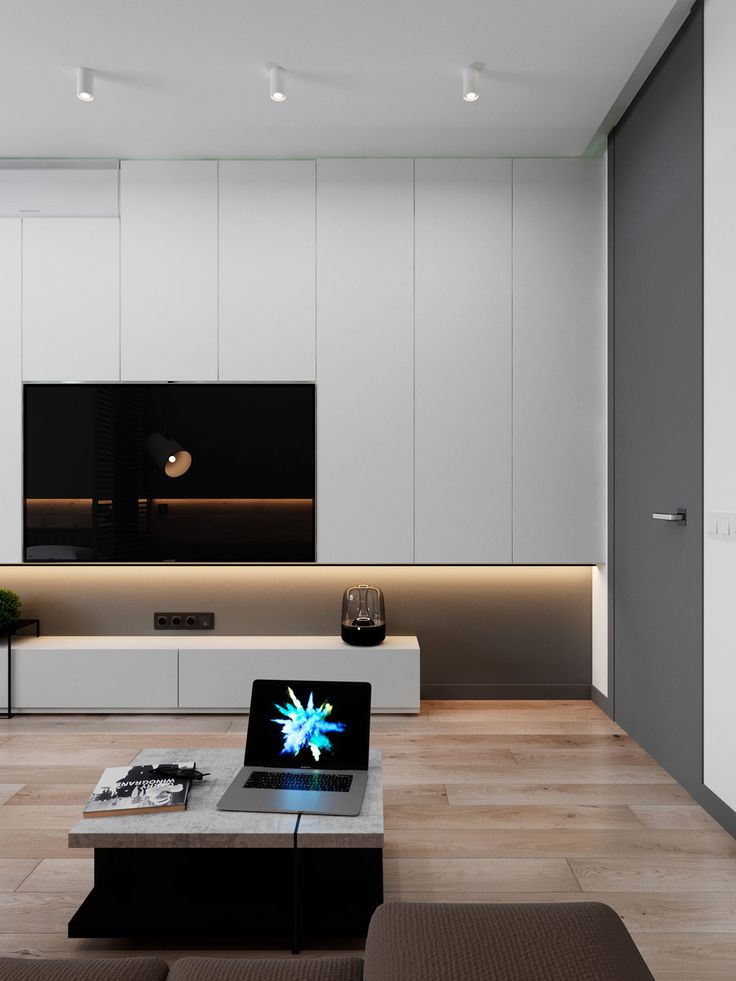 Skylights are the ideal solution for single-floor spaces or extensions.
Skylights are the ideal solution for single-floor spaces or extensions.
19. Take windows from floor to ceiling
(Image credit: Future PLC/ James Merrell)
Think about natural light sources to ensure the room stays bright. Making the most of natural light is a great way to keep a room feeling vibrant and lively and can even help a space feel larger than it actually is.
Take things further by optimising your open-plan living room to flow seamlessly out to an adjacent outdoor space. Consider wall-to-wall, floor-to-ceiling patio doors - they will extend your room and optimise light. Make the transition from inside to out seamless by colour-matching internal flooring with external garden decking ideas.
20. Choose an L-shaped sofa
(Image credit: Future PLC)
Use a corner sofa to define the seating area in a multi-functional open-plan living room ideas, and add a sense of intimacy to a large room. Create a comfy haven and nestle a rug and coffee table into the gap made in front of the living room sofa ideas to give a friendly, more cosy feel.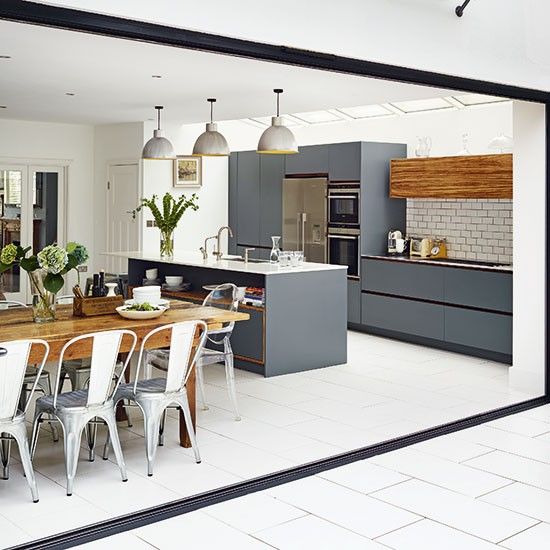
To further enhance the warm mood and create a cosy feel, paint the wall in this area a darker shade than used in the rest of the room. The moody colour behind the sofa helps to enhance it and make it even more inviting.
21. Plan out your space
(Image credit: Future PLC/ Nicholas Yarsley)
As one of the most social spaces in the house, your living room needs to look good, work hard and function well. Before you begin any work, take a little time to work out how the space functions for you. Is it a relaxing haven, and entertaining space of family central? A sophisticated neutral palette helps create a comfortable feel in this kitchen living area.
The trick is to pay attention to balancing the colour scheme and keeping everything in proportion. After all, open-plan living room ideas are a fundamental part of modern family schemes and need to incorporate all aspects of living.
22. Reconsider furniture placement
(Image credit: Future PLC/ Colin Poole)
It's very easy to keep your dining areas in, or linked to the kitchen section of your open-plan living room ideas. However, this really doesn't haven to be the case.
However, this really doesn't haven to be the case.
There's no reason why your dining table can't sit at the other end of the space, leading on from the living area.
If you love entertaining, we recommend positioning your dining table and chairs by the window with the most light. It also creates a lovely flow to a dinner party and you will naturally feel more relaxed sitting near the window and the comfier parts of the space.
How do you style an open-plan living room?
The way you style your open-plan living room ideas helps to determine how you use the space for maximum potential. Think carefully about how to arrange living room furniture. 'Use furniture to separate multi-functional spaces,' advises Rebecca from Furniture and Choice. 'Nothing adds personality to the home like the furniture you choose, and beyond adding to the style, furniture can be positioned in such a way to stylishly divide rooms into clear sections.'
'Start by taking measurements of your furniture, then mapping out on paper what you want each area of the space to be used for. Having this plan in place will help you to visualise the finished product and notice where you can use accessories and statement pieces to create clear “zones” within the room.'
Having this plan in place will help you to visualise the finished product and notice where you can use accessories and statement pieces to create clear “zones” within the room.'
'A bookshelf can be a good way to break up and separate a room in two, just fill the shelving with plenty of books and some trailing houseplants to create a cosy but stylishly-vintage reading nook,' suggests Rebecca. 'This style is perfect if you’re living in a studio apartment or have an open floor plan, as you can add a bookshelf next to your bed to separate your sleeping area from the rest of your space.'
How do you divide a room in an open floor plan?
'Dividing open-plan living room ideas can be done in a number of ways,' says Juliette from Juliettes Interiors. 'If you want a physical divide without compromising the light and feeling for space, opt for a glass screen or Crittal doors. These will give both privacy and separation, but still allow for the rooms to flow together.'
'Alternatively, you could zone the spaces with the use of rugs.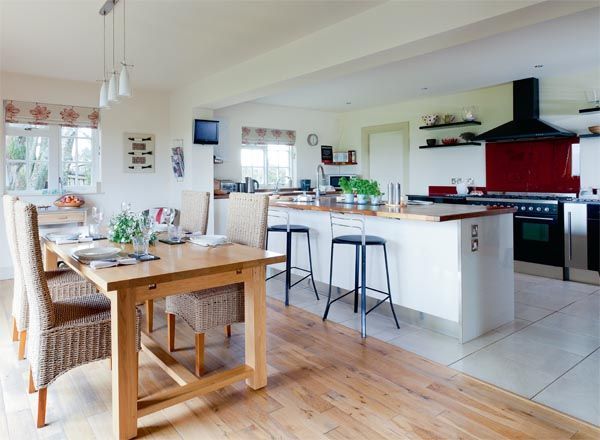 Whether it's in the centre of a living space or under a dining table, rugs are a great way to create separation.'
Whether it's in the centre of a living space or under a dining table, rugs are a great way to create separation.'
Open floor plan in an apartment: opinions and predictions about this trend
Architects, designers and users give their opinion on this trend and make predictions about how their house might look in the future
Open floor plans are not only very popular lately, but has become the main element that people want to bring into their home. At the time of this writing, over 600,000 photos of open-plan spaces can be found on Houzz, which means that this is indeed a very common architectural design with a large following.
Let's see why it has become so popular and what are its advantages and disadvantages. We asked these questions to both ordinary users and professionals, who not only offered interesting answers, but also tried to look into the future of a multifunctional home.
helsingHouse Fastighetsmäklare
International pros:
- Bernhard Kurz, architect at IFUB, Germany
- Andrew Brown, architect at Brown + Brown 9 Architects, UK0016
- Enrique Espinosa, Partner at PKMN Arquitectura, Spain
- Julissa Medina Moreno, Interior Designer at deSYgn by JM2, France
- Anthony Clark, Architect at Black Line One X Architecture Studio, Australia
- Alexandra Fedorova, Alexandra Fedorova Architect, Russia
What is an open floor plan?
According to the dictionary definition, this is "a space without partitions or with a small number of them.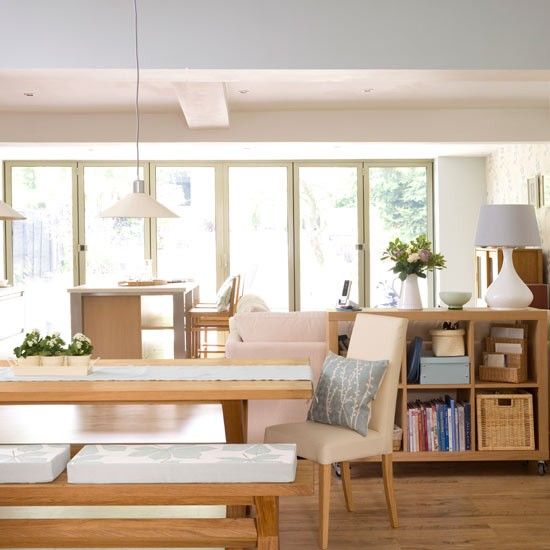 " This usually refers to the main living spaces in the home – the kitchen, dining room and living room – which create an open, streamlined space with few partitions and the abandonment of traditional isolated rooms in favor of a shared space. Technically, bedrooms and bathrooms can also be open-plan, of course, but this article will focus on open-plan living in the three spaces mentioned above.
" This usually refers to the main living spaces in the home – the kitchen, dining room and living room – which create an open, streamlined space with few partitions and the abandonment of traditional isolated rooms in favor of a shared space. Technically, bedrooms and bathrooms can also be open-plan, of course, but this article will focus on open-plan living in the three spaces mentioned above.
Architect Bernhard Kurz from IFUB explains: “In Germany, there is a growing trend towards open floor plans. This item is in almost all of our projects - sometimes to a greater extent, sometimes to a lesser extent. Usually it concerns the living room, kitchen and dining room, while the study and bedrooms remain separate small rooms.
Benefits of an open floor plan
Why is an open floor plan attractive? According to Andrew Brown of Brown + Brown Architects, “This solution remains very popular in the UK and seems to be best adapted to the lifestyle of most people and families in particular.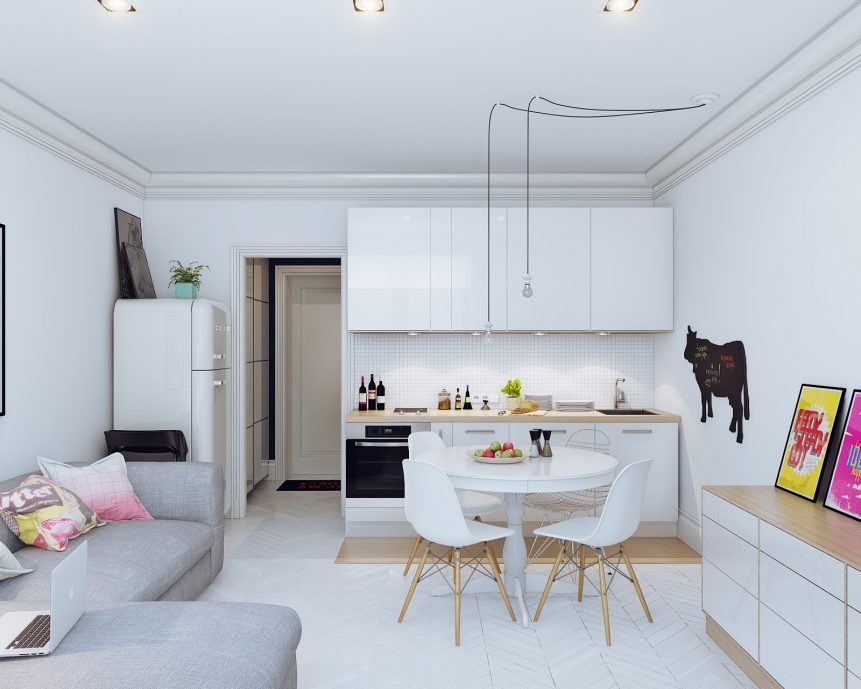 Lunches and dinners are not as formal as they used to be, and this has also contributed to the growing popularity of open-plan living.”
Lunches and dinners are not as formal as they used to be, and this has also contributed to the growing popularity of open-plan living.”
In the UK, where large spaces are rare, architects are often asked to 'enlarge' Victorian or Georgian houses by removing walls, connecting rooms and creating a bright and airy space for the whole family. “Although we are often asked to design an open-plan space, there are often opposite requests,” notes Andrew Brown.
Black Line One X Architecture Studio
Incentive to communicate more
As an architectural solution, an open floor plan affects how the residents of a home use space and interact with each other.
According to Melbourne-based architect Anthony Clarke, “Most of our clients love the idea of living in a home where there is a lot of common space that allows for more interaction with each other. First of all, it allows residents to be more open and more likely to engage in dialogue. ”
”
Black Line One X Architecture Studio
More time outside
Clarke also notes that an open floor plan allows for more light to enter and connect with the space in the garden or yard. “Our Engawa house project in North Fitzroy, Melbourne is a great example of open floor plan for open living,” explains the architect. “Thanks to this solution, the apartment of each of the tenants has a lot of light and access to a garden.”
Australian Houzz user Karin Madgwick shares this sentiment: "In Australia, it's worth choosing an open floor plan that then transitions into an outdoor space."
Domus Nova
Great solution for small spaces
Demolishing walls to expand rooms in small homes is a popular way to visually enlarge a space. German architect Bernhard Kurz says: “In areas with a highly competitive real estate market, the optimization of small apartments is more likely due to the lack of space.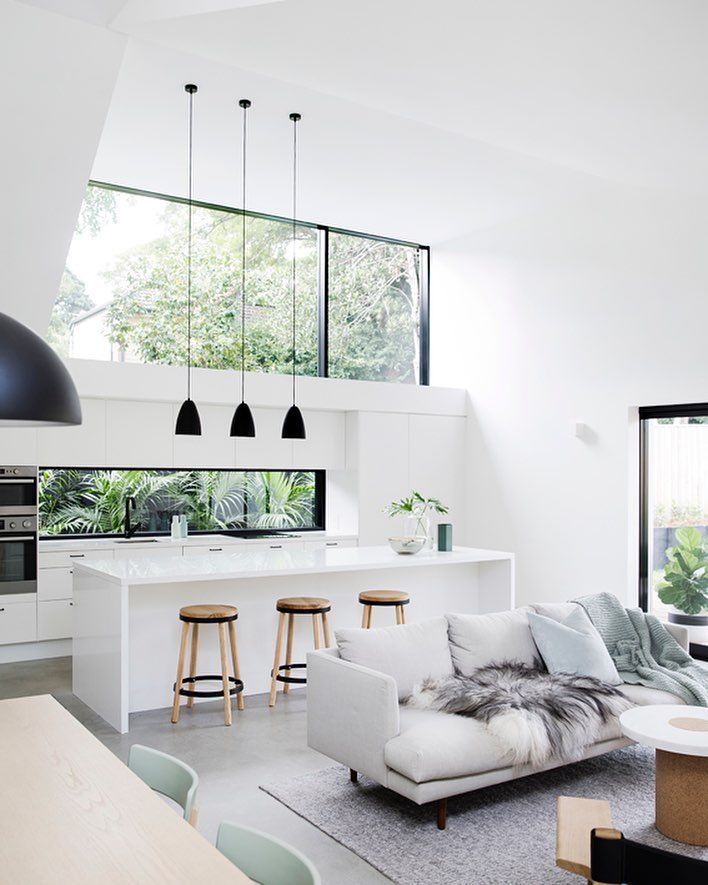 ”
”
Russian architect Alexandra Fedorova agrees that this is the best solution for medium-sized spaces. “When it comes to apartments with an area of less than 300 square meters, then an open plan is the most rational solution,” says the architect. “More and more people want to live in an airy, spacious and well-lit space.”
Alexandra adds: “For my own apartment, I chose an open floor plan and have not regretted it.”
Disadvantages of an open plan
While the arguments for this architectural solution are compelling, they also have disadvantages. Some believe that this trend will soon come to naught.
UK user Margretg2 explains: “Like many elements in interior design (solid doors, overlapped Victorian fireplaces, stone-look chimney ledges, one bright wall in the apartment), the open floor plan is a nod to fashion. When it goes out of fashion, we will all rebuild the walls and partitions that the previous owners destroyed. ”
”
Our user fizzfan54 raises the issue of privacy and lack of it: “I prefer private rooms - as long as they are big enough. How else to escape from the constant crowd of people in the house?
Eilmann Architekt
The smell of cooked food
The kitchen is at the center of many open-plan spaces. A 2015 Houzz survey of the latest kitchen design trends found that the majority of homeowners in the UK who remodeled their kitchens this year were planning an open floor plan. Similarly, 48% percent of Canadians surveyed were looking to install a kitchen in 2015 that "would be connected to other rooms."
However, the role of the kitchen is the subject of heated debate among our users. Many of them point to the smell of cooked food and dirty dishes as a disadvantage.
Luisa Ramos, our user from Spain, says: “I like the idea of an open floor plan, but if you have a large family that uses the kitchen a lot, this layout is not very convenient, as the smell will spread throughout the house and in winter it is difficult get rid of. "
"
Mauro Sini Fotografo
Extra noise
Olena Tkach from Ukraine writes: “A separate kitchen is a must in our family, as I cook when everyone is asleep. So I have to close the doors to use the blender, mixer, or even just cut vegetables with a knife.” However, she agrees: "Everything else (eating, watching TV, doing your own thing, relaxing and talking) is better to be combined in one space to make communication between family members easier."
Alexandra Fedorova notes: “An ideal house should have two kitchens: one connected to the living space and one working. We usually use this option in our projects.”
Clutter and Lack of Sufficient Storage
Demolishing walls also destroys storage space that many homeowners need. This is one of the reasons open floor plans are not always popular.
Our German user Ich Du writes: “An open-plan space looks bigger, brighter and more inviting.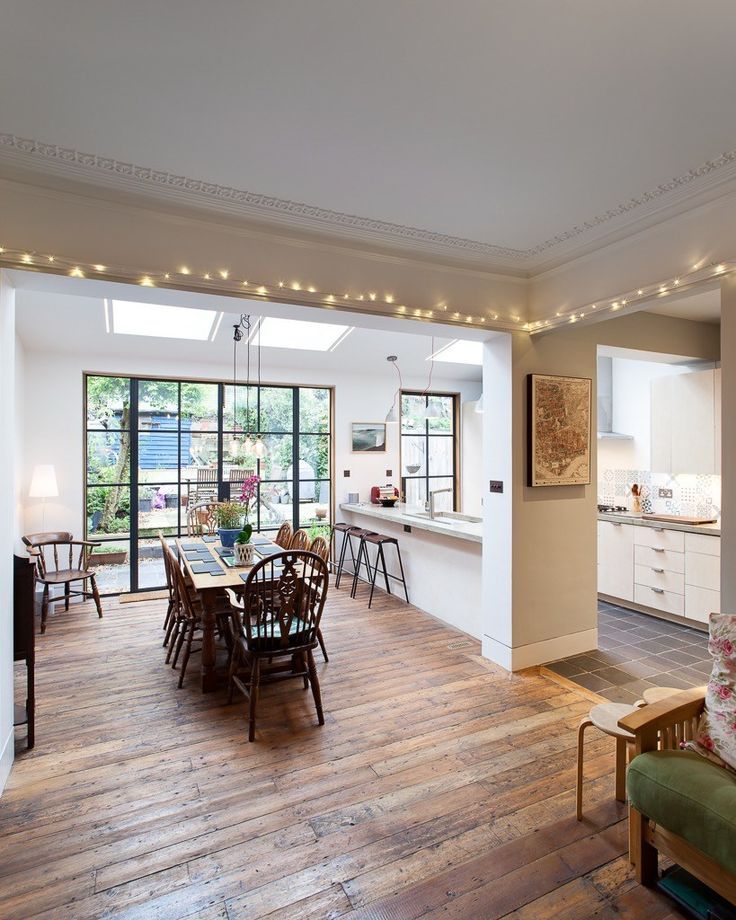 But... I don't like it when my kitchen looks untidy and the guests see it. What I really need is a large kitchen where you can eat every day with the whole family, as well as a separate living and dining space where you can spend time with friends and guests.
But... I don't like it when my kitchen looks untidy and the guests see it. What I really need is a large kitchen where you can eat every day with the whole family, as well as a separate living and dining space where you can spend time with friends and guests.
Russian user Oxana1963 says: “If you have a small kitchen, then with an open plan it will become even smaller, since the walls where you could put kitchen furniture and a refrigerator will disappear.”
Alexandra Fedorova's Bureau
4. Lack of personal space
Oksana is one of those who tried open floor plan and now wants to return to the traditional and isolated scheme: “In my new apartment, I combined the kitchen and living room, and now I'm thinking about how to separate them."
One of the problems she faced was the mess. “When you have guests, at some point dirty pans, plates, bowls are everywhere. It does not paint the living room at all, ”she says.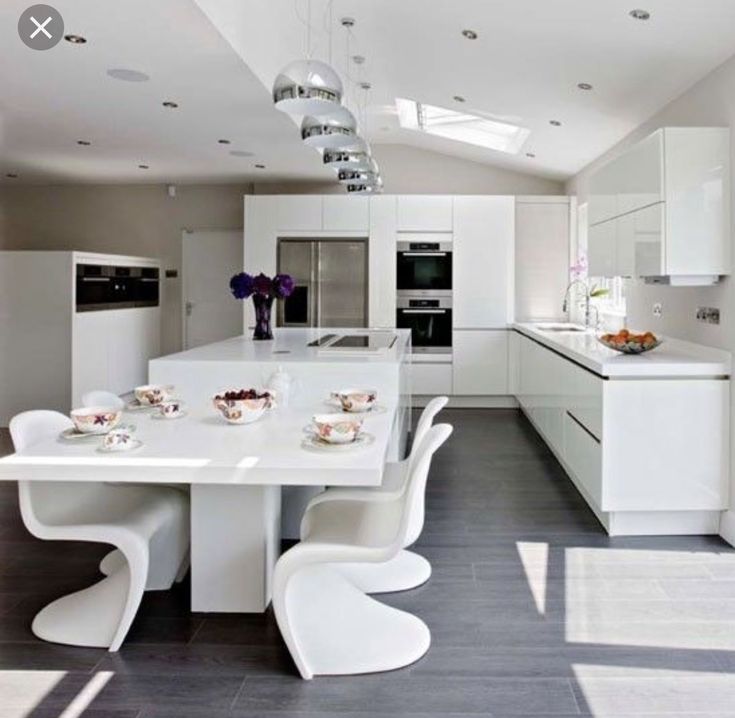
“If you don't have another living room or a separate study, then the second person living in the apartment will not have the opportunity to have a cup of tea or chat with friends while you watch TV. Inviting guests into the bedroom to chat is not a good idea.”
D+FORM
Why open floor plans are so popular around the world
Design and architecture trends are becoming more and more global. Thanks to the flow of ideas from one country to another, certain trends become popular all over the world. Has this influenced the spread of open-planning?
Enrique Espinoza, partner at Spanish architecture studio PKMN, believes this global exchange of ideas has played a role in the rise in popularity of open floor plans. “Spanish architecture, where the Mediterranean tradition is strong, has always been dominated by a closed layout with a separate room for each function,” explains the architect.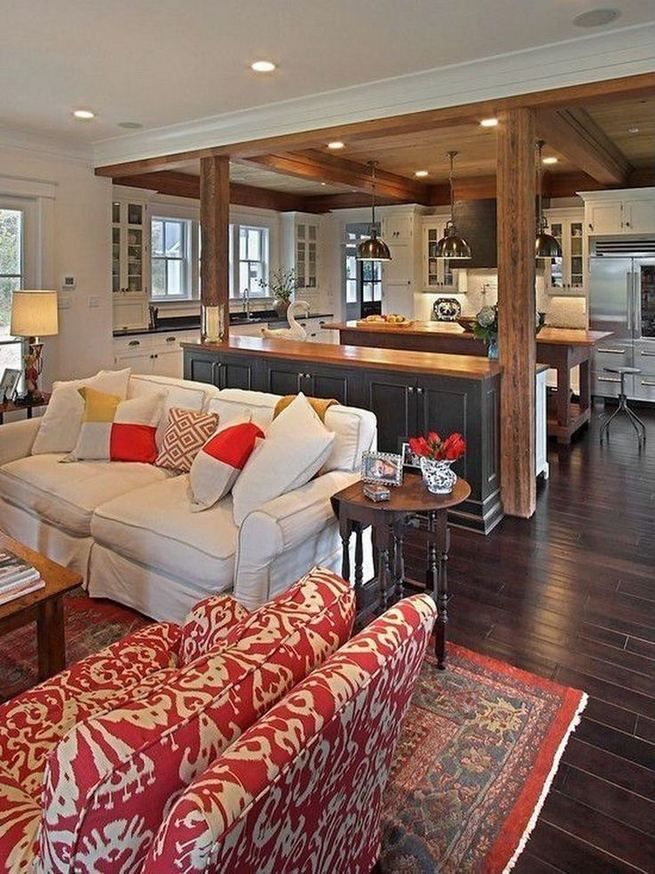 But times have changed: "Through life in a globalized world, television constantly showing other types of homes (especially American and British ones), and more flexible room layouts like those we see at IKEA, ideas about the home have changed and expanded."
But times have changed: "Through life in a globalized world, television constantly showing other types of homes (especially American and British ones), and more flexible room layouts like those we see at IKEA, ideas about the home have changed and expanded."
According to Espinoza, access to global architectural trends has had a major impact on local design: “Gradually, we came to realize that such a layout is more adapted to modern life.” Which, he believes, is very different from the modern model of the Spanish family - "a married couple with two children who leave their parental home when they reach 20 years old."
Dyer Grimes Architecture
Up for Controversy
Given the scale of the debate, the open floor plan is no doubt a hot topic among Houzz users.
At the time of this writing, Houzz USA had over 77,000 discussion topics in the Open Plan Help section. There are 2400 such discussions in the UK and 1400 in Australia.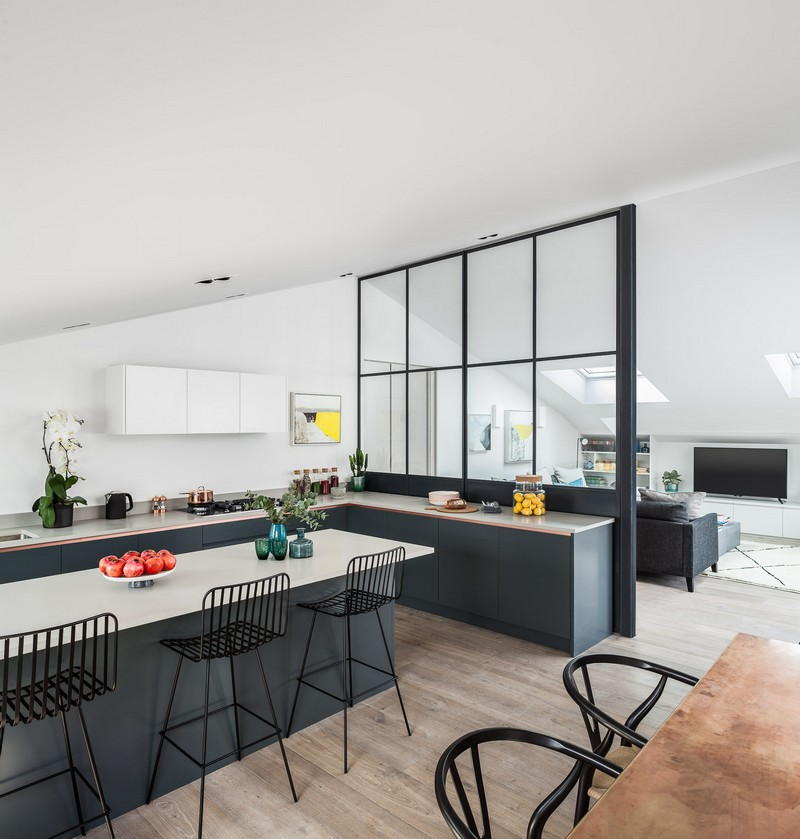 It looks like a lot of our users are looking for advice on open floor plan!
It looks like a lot of our users are looking for advice on open floor plan!
Egue y Seta
Poll
As part of an informal survey, an impressive part of the users preferred the open floor plan to the closed one. In some countries, the preponderance was significant: in the UK, Spain and Russia, more than 60% voted for open planning.
However, the countries where this type of layout proved to be the most popular were Germany and Australia. In Germany, 4 out of 5 users chose it. In warm and sunny Australia, this option was supported by three-quarters of those surveyed. Our Australian user Carrie Langlow writes: “In Australia this is the obvious choice… We love the open floor plan and the mix of indoor and outdoor space…”
PAD studio
Way forward?
However, there is always a third party in the polls, and many users have come up with interesting solutions to the problems that open floor plans bring.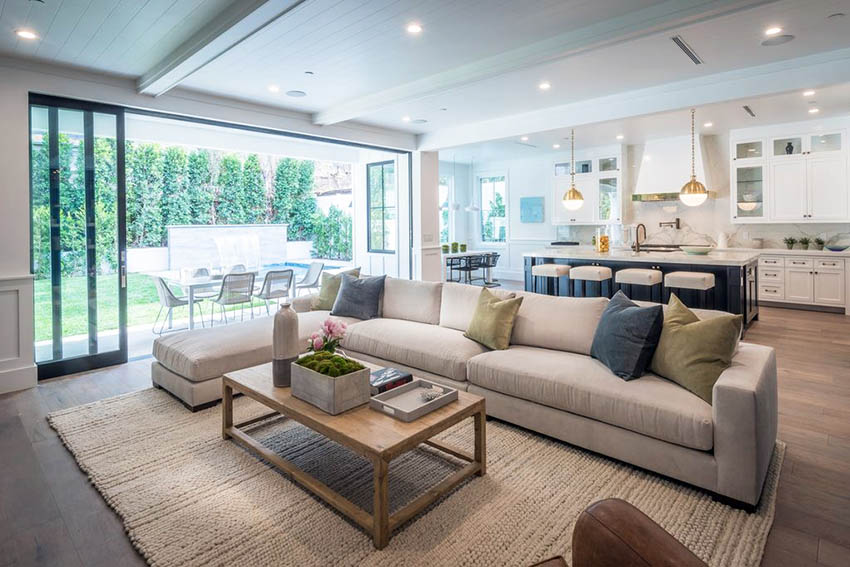 Australian user howde1 says the ideal solution would be "the ability to close or open the space as needed", and it seems that the flexibility of living spaces is a priority for many.
Australian user howde1 says the ideal solution would be "the ability to close or open the space as needed", and it seems that the flexibility of living spaces is a priority for many.
Mimi Fuchs from Germany writes: “Open space is great, but in some situations it's better to have two separate rooms. Therefore, I like solutions that allow you to change the room with sliding doors or walls.”
Andrew Brown of Brown + Brown Architects echoes this sentiment and says that when his company designs an open space, "the team does everything to give residents privacy."
In the future, open floor plans will be combined with closed ones.
“The house we worked on in Aberdeen has an open floor plan in the kitchen and dining room,” Brown explains. “Originally, the clients wanted all three rooms on the ground floor to be open, but due to building permit issues, we were only allowed to connect two rooms at the back of the house. Despite this, the customers are pleased that the third room remained isolated, and both solutions are combined in the house. ”
”
pkmn Arquitectura
The future is multifunctional
The architects of PKMN Arquitectura found a very successful solution to connect open and closed space: they designed movable walls that allow the space to be used for different purposes, as shown in the photo.
“The future of the home is increasingly connected with the optimization of space and its multifunctionality in an environment where every square meter becomes more expensive. The ability to use all the space in the house every second increases the value of the property,” explains Erique Espinoza, partner of the bureau.
In the future, everything is made to order
Julissa Medina Moreno, interior designer at the French bureau deSYgn by JM2, says: “The French prefer to live in as open spaces as possible, with natural light and air circulation.”
However, she adds: “The love for lofts is gone.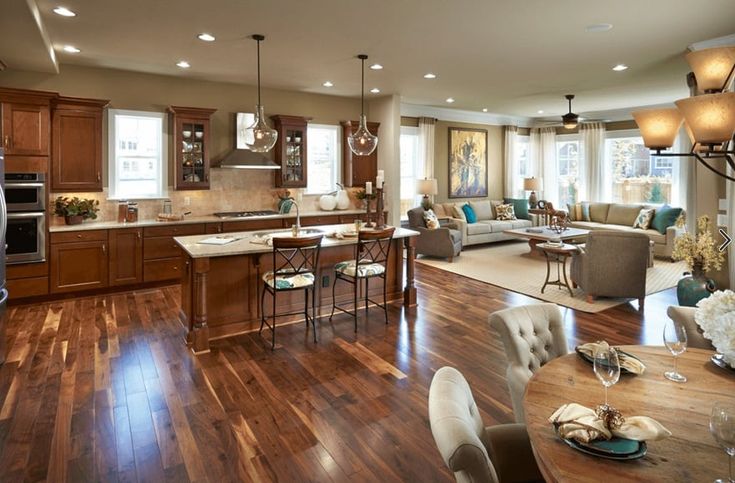 People no longer want to build walls, but seek to zone spaces with furniture. Therefore, there are more and more requests for special furniture, which are designed by architects and interior designers and then made by specialists.”
People no longer want to build walls, but seek to zone spaces with furniture. Therefore, there are more and more requests for special furniture, which are designed by architects and interior designers and then made by specialists.”
STEPHEN FLETCHER ARCHITECTS
Homes must adapt to the changing needs of families
Watching our homes change and how open floor plans will look in the future is exciting. “Buildings must adapt over time to the changing needs of their occupants,” says Andrew Brown. It is difficult to predict what family life will look like in 20 years. It will be interesting to see how an increasing number of family members from different generations are living together due to rising real estate prices. I'm sure this will make the open floor plan popular."
TELL US…
Do you have an open floor plan in your house? Or do you prefer private rooms? Share your ideas in the comments section.
Sponsored
Köln | Düsseldorf - Experte für maßgefertigten Möbel- und Innenausbau
Open floor plans have become a trend in interior design
Open floor plans have become almost an absolute must in almost every modern home. Long gone are the days when box rooms had a well-defined space of their own and their exclusive function.
Today's buildings tend more and more to have spaces flowing smoothly and seamlessly into one another without sharp, well-defined boundaries.
Modern interior design, of course, for this reason, cannot be limited to design themes and colors, furniture and accessories.
It is about space management and its full use. That's what an open floor plan does with style and panache!
The open plan does not mean that every person loses the right to a personal area with his individual identity. Still, the presence, albeit very thin, but quite distinguishable boundaries between the kitchen, living room and dining room, made in an open plan, makes the interior more attractive.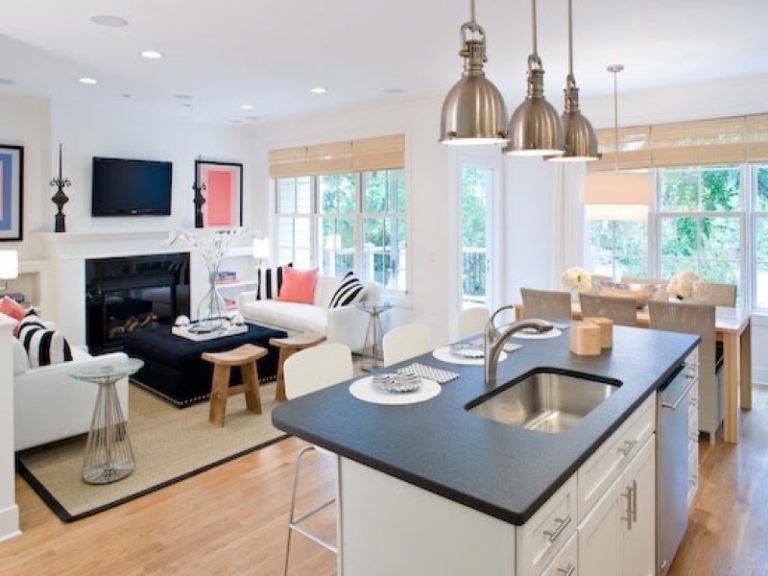
Therefore, we took the liberty of sharing some tips with you, dear guests of the Design Museum! Organize your space beautifully without even enclosing it in strict boxes like boxes.
1. Ways to move around the room
The best way to start your work on your outdoor space is to make a list of the functional areas that you intend to place there. It's not difficult, especially if you have a clear idea of what you want.
Possibly a small kitchen next to a spacious dining area, with both areas served by the same dining area anda fireplace. In general, work out the space requirements according to your needs.
Having dealt with the location of the sites, we will see how the routes of movement around the room are outlined by themselves, where passages and corridors create virtual boundaries, while walls almost do not participate in this demarcation.
2. Transparent glass partitions
The widespread use of glass in modern homes is not accidental. Its transparent, lustrous presence provides visual contrast and reduces the textural dominance of stone, concrete and wood in a room.
Its transparent, lustrous presence provides visual contrast and reduces the textural dominance of stone, concrete and wood in a room.
Glass partitions and sliding glass doors are a great way to organize and compartmentalize a large room without opaque obstructions.
Since the partitions do not obstruct the line of sight, the attractiveness of an open and spacious room is not lost.
The flow of natural light and the direction of view inherent in the room are not affected by the use of glass partitions, which, by the way, can be easily removed if necessary.
If large transparent doors don't appeal to you, replace them with small divider sheets of the same material.
Using rugs and rugs is another surprisingly simple way to organize your outdoor space. At the same time, sophistication and elegance will come to your home.
And maybe even chic. We do not dwell on such properties of carpets as an abundance of sizes, styles, colors, patterns - more on this in Area rugs are available in a variety of styles.
The availability of such products captivates. With their help, you can easily create a fashionable atmosphere in the room. You can even adjust the seasonal change of these accessories. For the dining room, it is permissible to choose simpler rugs; in the living room, you need something that brings light and freshness.
3. Room in room
The whole idea of space layout methodically and aesthetically lies in the open floor plan. In essence, we are talking about creating a large room from several small ones.
Doing this without walls means that in order to create functional areas, it is necessary to use clear visual markers that separate one corner from another. A slightly raised floor in one part of the room easily creates a distinction between sections, making the transition smooth and attractive.
This approach is often used in modern homes to distinguish the kitchen as a focal point from the rest of the room. To refine and complete the composition, it remains to add a few strokes.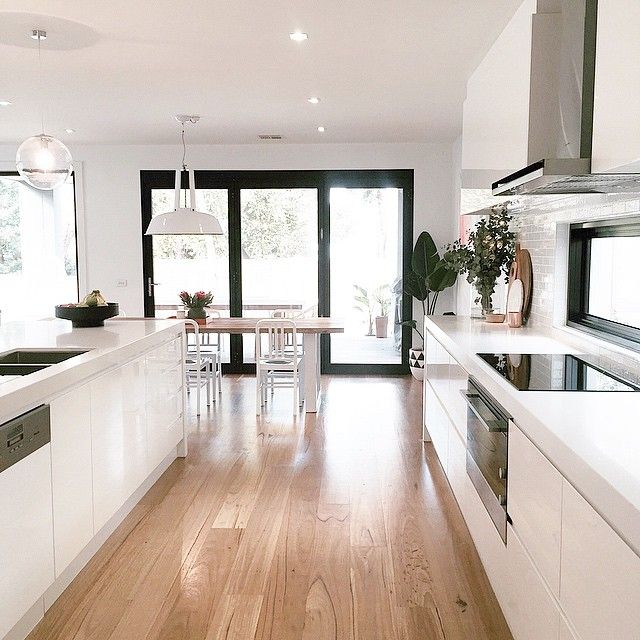
The top surface of a room may not just be part of the roof for your home. Suspended ceilings (special false ceiling) with built-in lighting will easily help to allocate part of the common space into a separate compartment. The wooden beams at the top of the room can also contribute to this.
4. Recessed and stage lighting
It may sound trite, but lighting is the most important feature in decorating any interior. Regardless of the quality of the décor or layout, poor lighting can create a darkening and lack of lightness and airiness.
Use a set of recessed fixtures evenly across the floor to create a base. Then add several layers at other levels to the very top, eliminate the gaps in the light field.
A theatrical chandelier (Adramatic chandelie) above the dining table, or beautiful pendant lights illuminating the kitchen island, are sure to create an attractive look for your apartment.
5. Stylish shelving
Shelving is another way to functionally divide a room into functional compartments without creating barriers to transition from one room to another.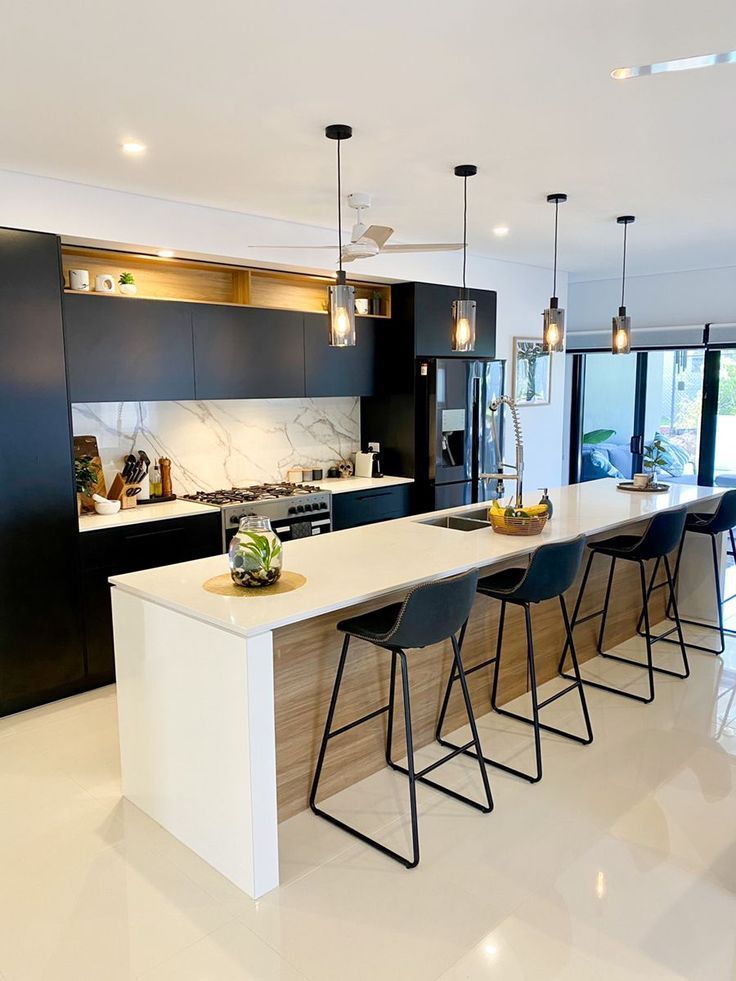
A modern, stylish shelf at the dining table or an entertainment unit in the living room give the respective areas of the room an organized and individual look.
Make sure that the shelves do not encroach on freedom of movement and are compact enough to fit within the defined space. Since most modern kitchens use shelving, it's not a bad idea to use shelves and storageunits to delimit areas!
6. Wooden slats and plasterboard walls
Cleverly placed wooden slats that slide apart like elegant walls and plasterboard partitions with windows are an option for those who want the best of both worlds (open and traditional construction).
These additions are not as rigid as regular walls, but they offer privacy and convenience. Both solutions are especially useful in creating an open-plan, semi-enclosed kitchen that shares a common theme with the adjacent area.
An open floor plan requires a single uniform background for the entire floor. Hence, use one neutral color for the walls.